




































Wine tasting experiences
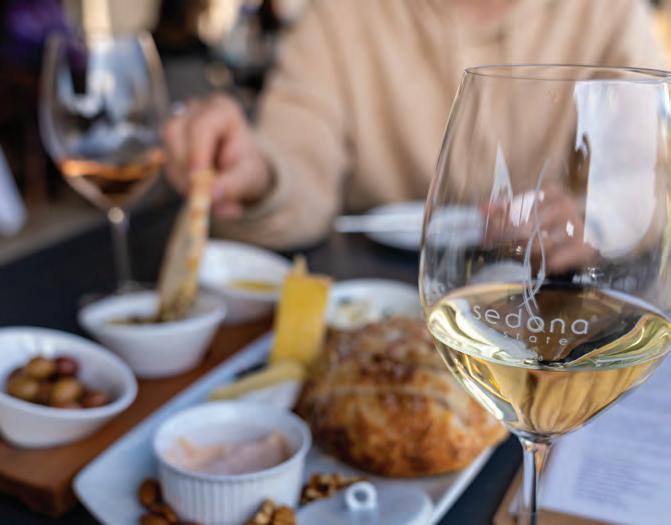

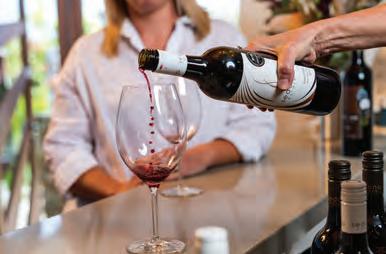
Artisan cheese platters & charcuterie boards
Local art & sculptures
Our vineyard, planted in 1988 is nestled between the picturesque rapids of the upper Goulburn River and the foothills of Mt Torbreck.

With frequent snow capped peaks in our surrounds, our cool climate provides us with an extended ripening season and keeps our yields low.
2019 was a an outstanding growing season with warm and dry conditions. This wine is a fine example of Shiraz with a sense of place. The colour is a lovely deep crimson hue, aromas of black pepper and spice, raspberry, and lovely integrated oak from maturation for 15 months in a mix of French and American small oak barrels.

The palate is medium bodied, with a fine elegant tannin structure, and generous length. This wine will reward medium term cellaring of 6-8 years.





Farm relics sit side-by-side with fine china and silverware at Killingworth Hill Café & Whisky Bar ~ it is rustic, traditional Australiana with more than a smack of sophistication. Drink in this history as you sample some of the finest drams you’ll ever come across. Enjoy a glass of wine, a charcuterie board made with the finest cheeses, meats, patés, pickles, fruits and nuts, or a bowl of homemade soup, a delicious dessert, tea or coffee. Weekly specials
Globally Inspired Locally Handcrafted
Your local microbrewery & event centre in Taggerty.

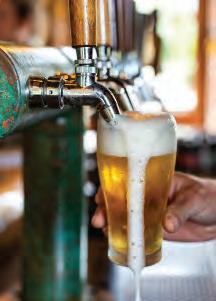

WE LOVE BEER.
WE LOVE MAKING IT. WE LOVE DRINKING IT. MOSTLY WE LOVE SHARING IT.

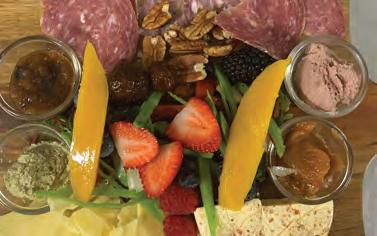
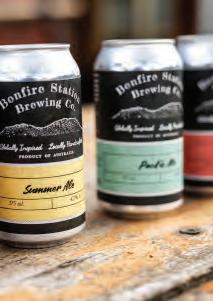
Check our media for special events.


OPEN TO THE PUBLIC


Friday 11am-6pm Saturday 11am-6pm Sunday 11am-6pm
ESSENTIAL
0455 266 888 36 Killingworth Road, Yea www.killingworthhill.com.au
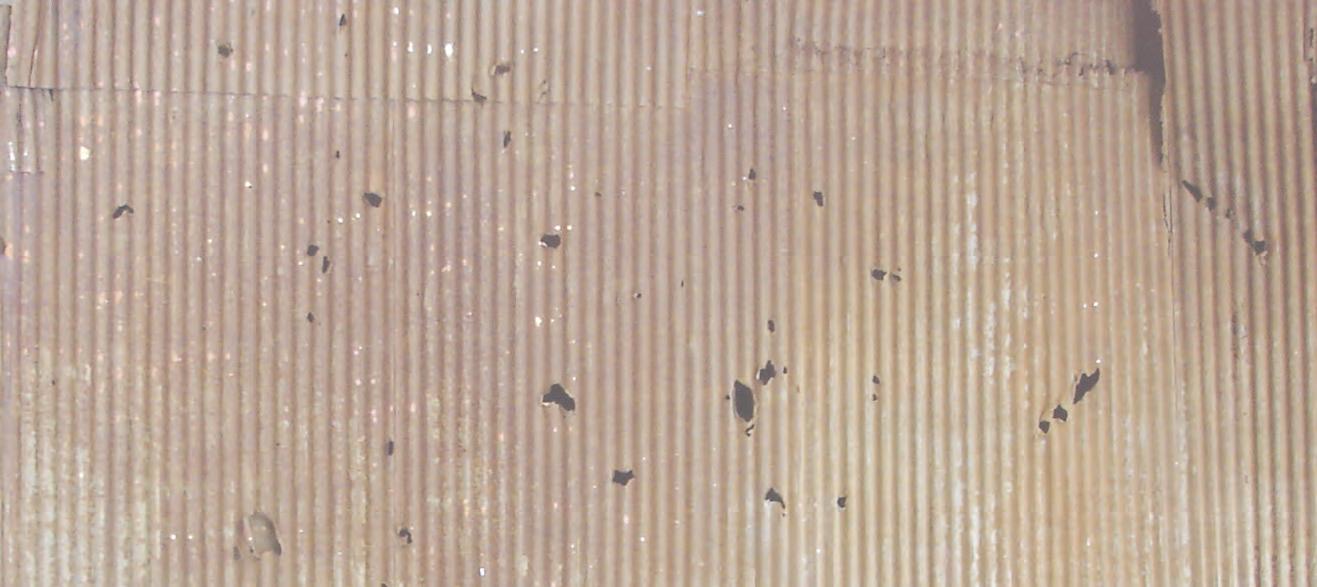






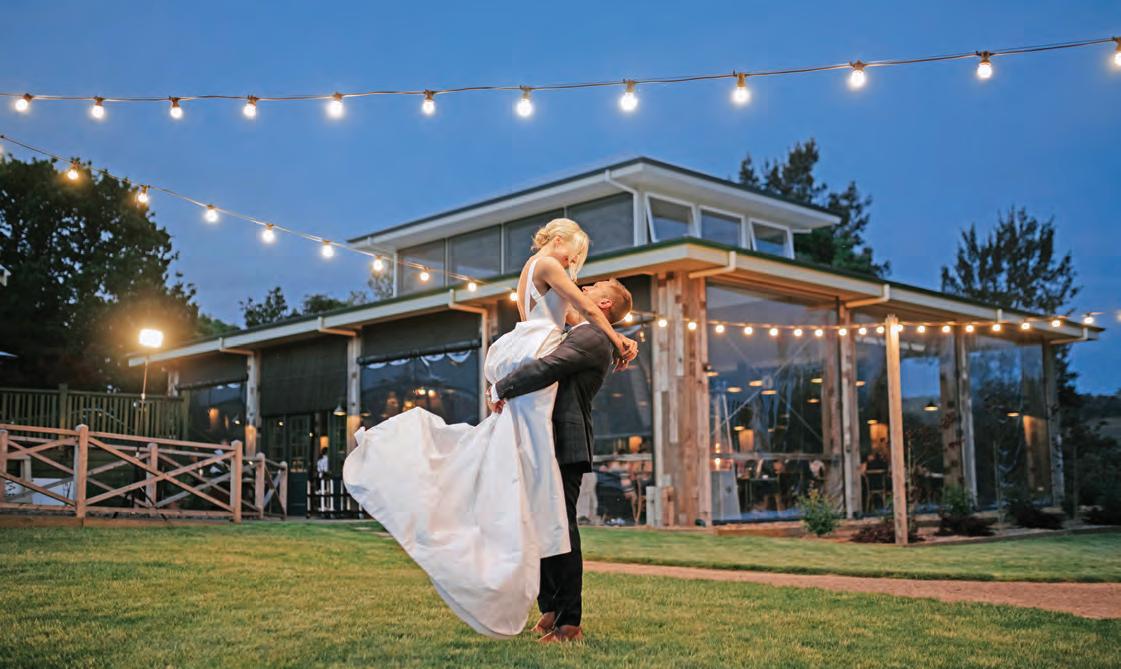

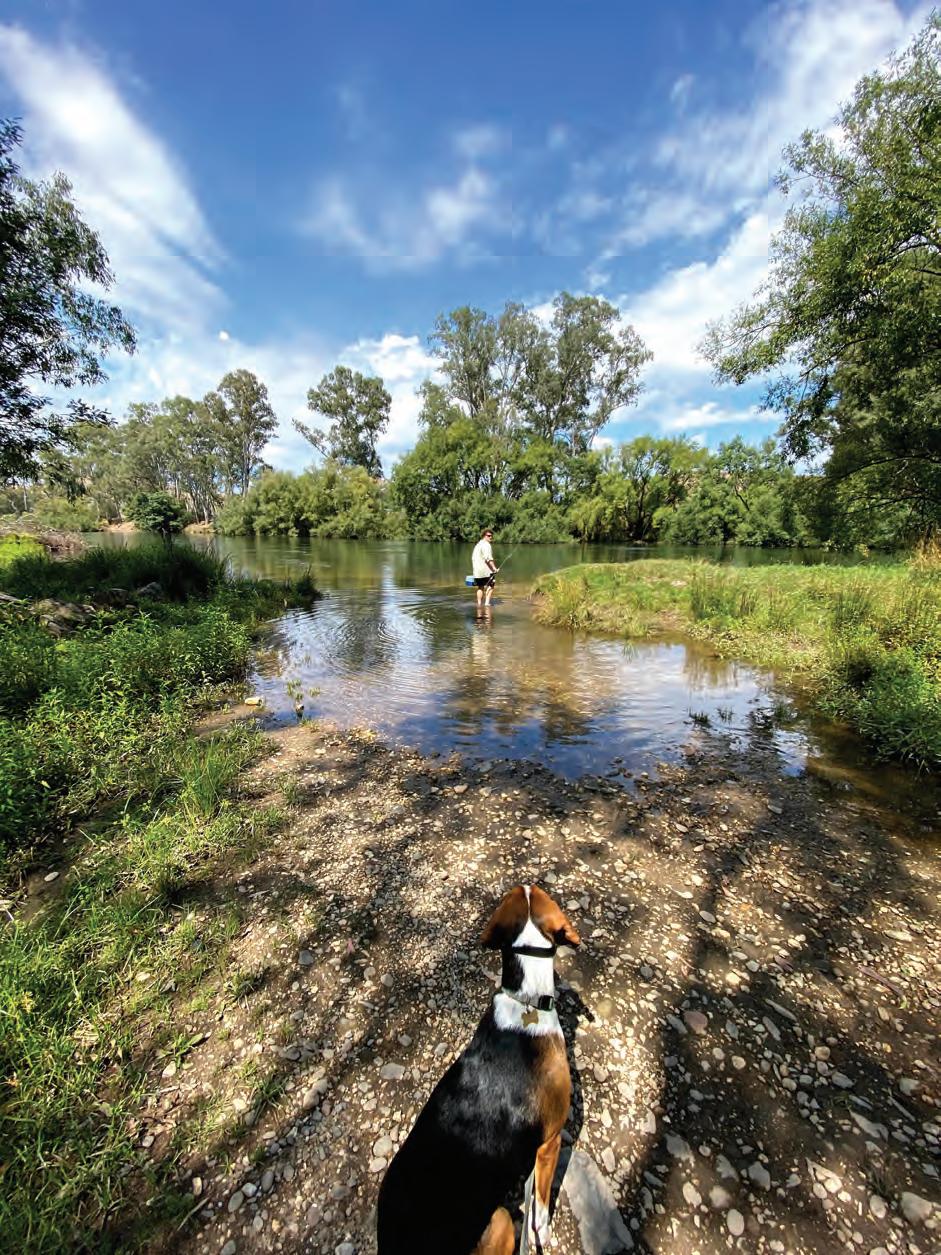





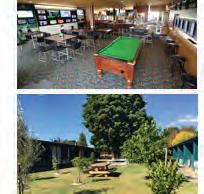







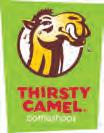





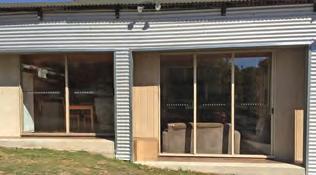





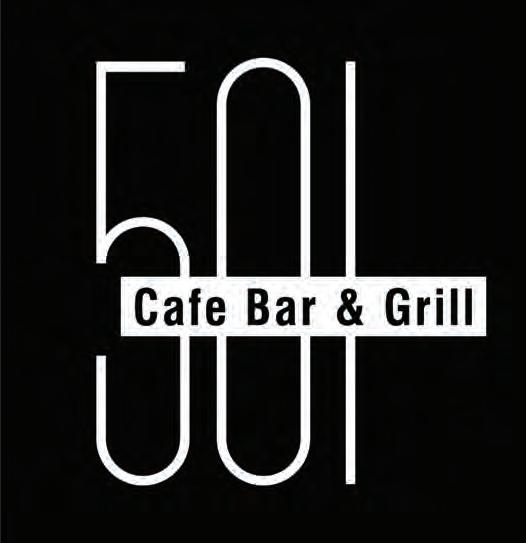




Fuelling North East Victoria since 1953 with quality products and great service, Simpsons Fuel proudly support our local community.



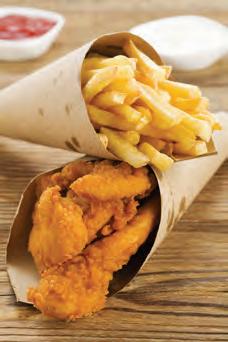
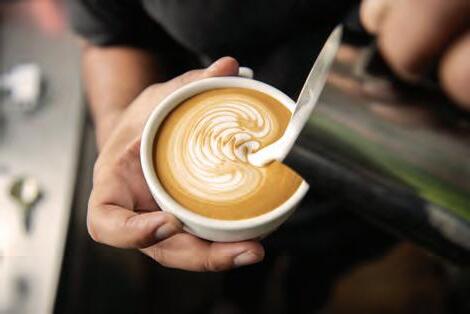

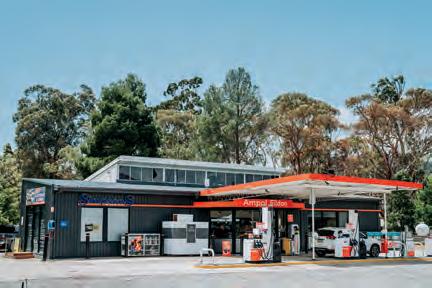













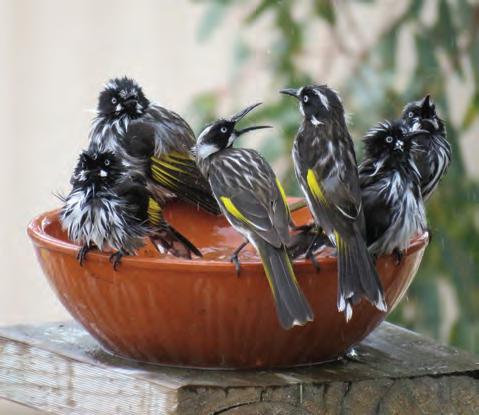
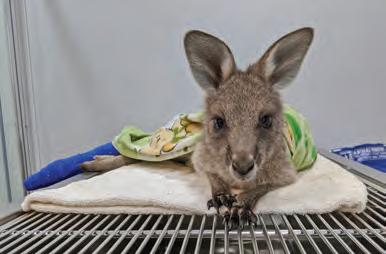


Murrindindi’s
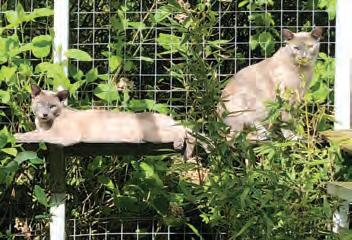

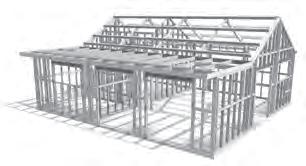

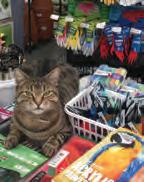

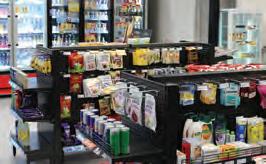





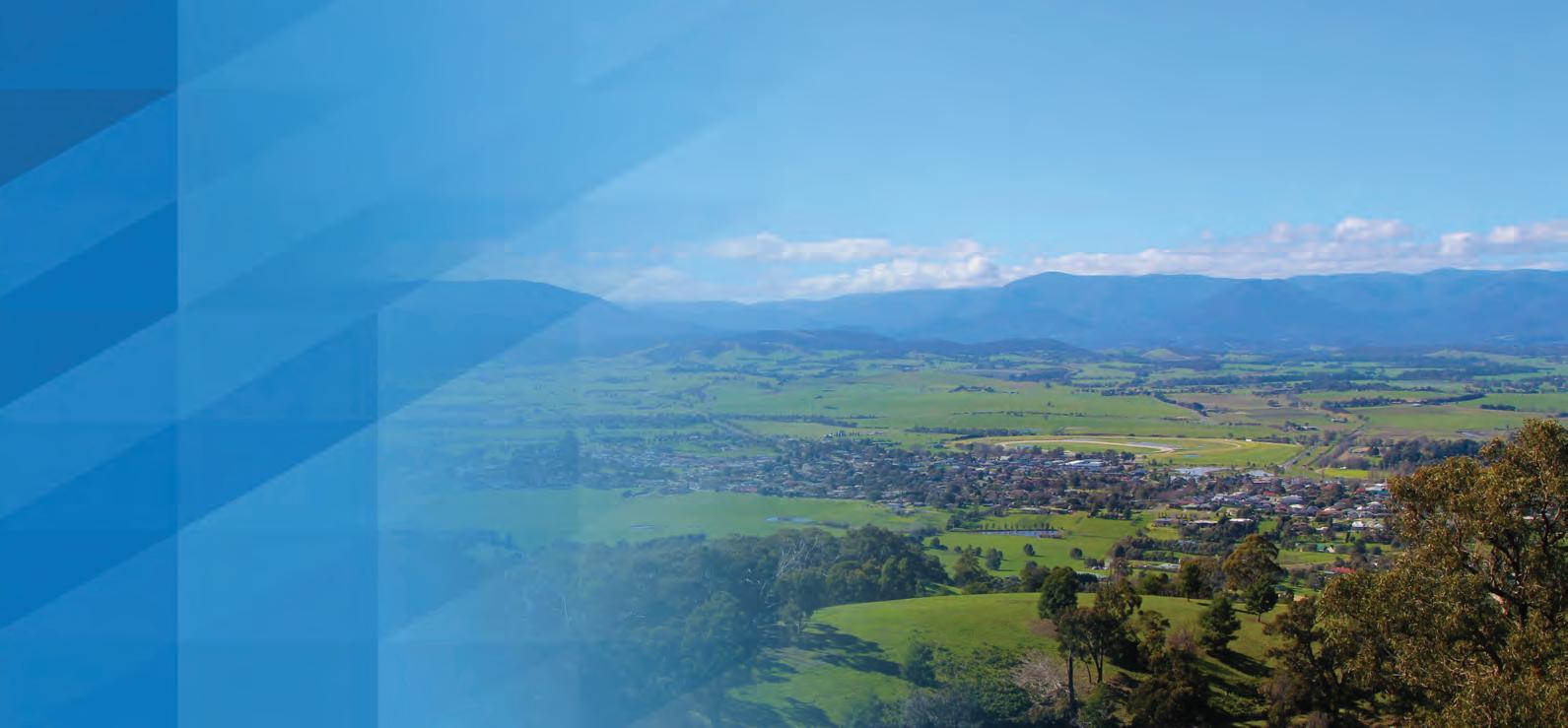


 Chris (left) and James testing their wares at the brewery inside Alexandra’s old butter factory.
By Emily Friedel
Chris (left) and James testing their wares at the brewery inside Alexandra’s old butter factory.
By Emily Friedel
Chris Turner and James Smith want to bring people back into the old Alexandra butter factory building. But they’ll be doing it with beer rather than butter.


The factory was built in 1892 by local entrepreneur William Nicholson. An article published in The Standard newspaper in 1891 suggests that the butter factory arose from the need to support local dairy farmers. In the 1930s, the wooden building was replaced by the structure that still stands today with its striking redbrick façade and gabled roof. Since then, it has housed an upholstery factory, a sawmill, a metal machining business, and been used for storage. This long history in Alexandra means many locals have links with it. And sometimes the ties stretch a little further.
“Almost everyone we talk to has some sort of connection to the butter factory,” Chris says.
James adds: “I popped into a home brew store [in Melbourne] I worked at in 2005 to buy some stuff, and I was talking to my old boss – I hadn’t seen him in over ten years – and I was telling him about this place. He said, ‘Oh, my grandmother used to work at that factory.’”
For Chris and James, the old brick building is now home to their long-held dreams of
owning a brewery. James has been home brewing since he was old enough to legally drink alcohol, and the idea of getting their own brewery popped up in the pair’s conversations many times over the years. A ‘For Sale’ sign at the butter factory catalysed the transition from dream to reality, and On Point Brewery was born.
“My wife and I were up here
holidaying, and we saw the butter factory for sale and said, ‘That looks like a brewery.’ So we ended up purchasing it with the view to turning it into a brewery. That was two and a half years ago,” James says.
“When we first set up, we were driving up on weekends and some nights after work, doing the commute from Frankston some nights after work. Then after the first year, we moved up here full time, committed,” Chris says.
In its transformation to a beer production and distribution facility, the butter factory has seen some big changes over the last couple of years – with plenty more to come. The spacious, high-ceilinged building now houses the craft brewery, which produces a variety of beers inspired by the picturesque Murrindindi Shire area and its distinct seasons.
“We’ve got a core range of four beers, and we made

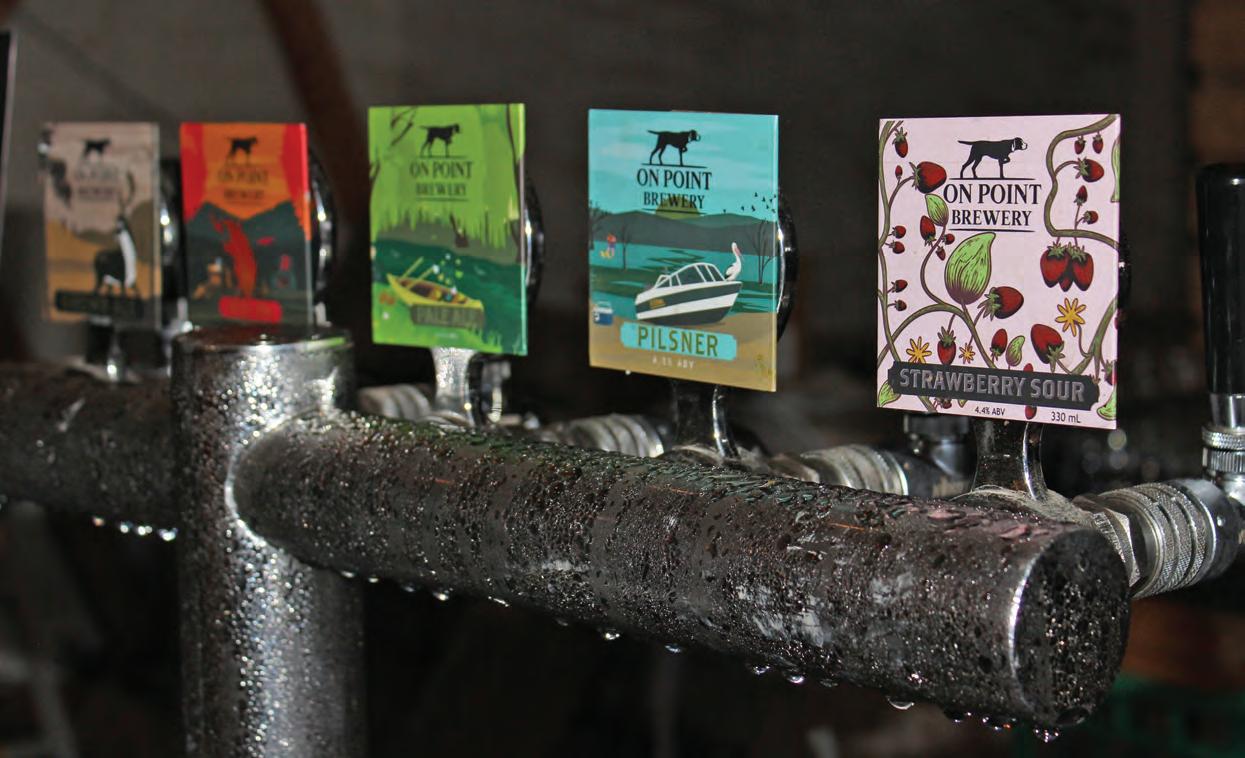
them to represent the seasons. The pilsner’s a great summer drink, the red IPA being a bit sweeter is a good autumn drink, the brown ale’s a nice winter warmer, and the pale ale’s a spring beer. We do a few seaonsals as well: we do a strawberry sour, we do a cherry porter, and we’ve got a new one coming out, ‘The Mutt’, which is our big 7% IPA. None of our beer is pasteurised or filtered, so it’s all as fresh as you can get,” James says.
Of course, being avid beer drinkers themselves, Chris and James are dedicated to producing beverages of the highest quality and are willing guinea pigs when it comes to testing them.
“We make sure they work well. We don’t add anything to keep it longer or anything like that because that sort of kills the flavour. My favourite’s our brown ale – I call it an English-style brown ale with American hops,” James says.
Chris chimes in: “I’d probably
go with The Mutt, it’s nice big, bold IPA – lots of flavour to it. Great drink to settle down with as well.”
The beer labels also have a local flavour, with designs based on some nearby natural treasures.
“The pale ale is the Goulburn River, the pilsner is Bonnie Doon,” Chris says.
“The winter one, the brown ale, is an image of a stag because a lot of people go hunting here in winter,” James says.
Similarly, the brewery name and logo are a salute to local life.
“I’ve got a vizsler dog, a pointer, so we took images of him to our graphic designer, and we sort of based if off that. I think it resonates with the area – a lot of people have pointers and go hunting,” James says.
Currently, the brewery produces roughly 1,000 litres of beer a week, which
is distributed all around north-eastern Victoria. On Point beers are on tap at pubs throughout the region, and James and Chris take them on the road to festivals and local markets. As of December last year, they also opened a temporary bar at the butter factory, dispensing their beers in take-away packs or schooners. The latter can be enjoyed in the beer garden or a comfy spot indoors on a couch, possibly with a pizza or kransky cooked on site. But demand for their beers is growing beyond current brewing capacity, and there are plans to get more fermenters in the near future to substantially increase production. Other plans for the year include installing a permanent bar by summer and continuing to renovate and expand the indoor drinking area. For winter, warmth and entertainment are on the cards.
“We’ve got a lot of event
ideas as well. We had live music down on Australia Day, and we’ll get more live music in. We want to have days where we set up a community festival here and get food trucks. We’ve got a few ideas of things to run during the winter period to make it interesting. We’ve got a fireplace inside as well, so it’ll be a nice cosy place to come and sit down in winter,” Chris says.
They’re also hoping to branch out and reconnect more of the local community with the old butter factory or welcome visitors coming to explore the area.
“I think craft beer and cycling goes hand-in-hand, so we really want to get people from the Rail Trail over here – ride the Rail Trail, then come here for a pizza and a beer and ride back,” James says.
James and Chris also want to assure customers that On Point Brewery’s beers are
suitable for accompanying other outdoor activities in the area, including camping and fishing – both of which they have personally trialled to guarantee drinking pleasure.
“They’re well tested,” Chris says.
Whatever your reason for grabbing a beer, Chris and James encourage you to drop into the butter factory to get one and connect with what’s happening there. The old building has plenty of life left in it and will be invigorated even more over the coming year. So this winter is a great time to join Chris and James on their brewing journey.
“Come check it out now, but there’s lots more to come,” Chris says.
On Point Brewery can be found at 9 Downey Street, Alexandra. For more information go to their website onpointbrewery. com.au or find them on Facebook facebook.com/ OnPointBrewingCo
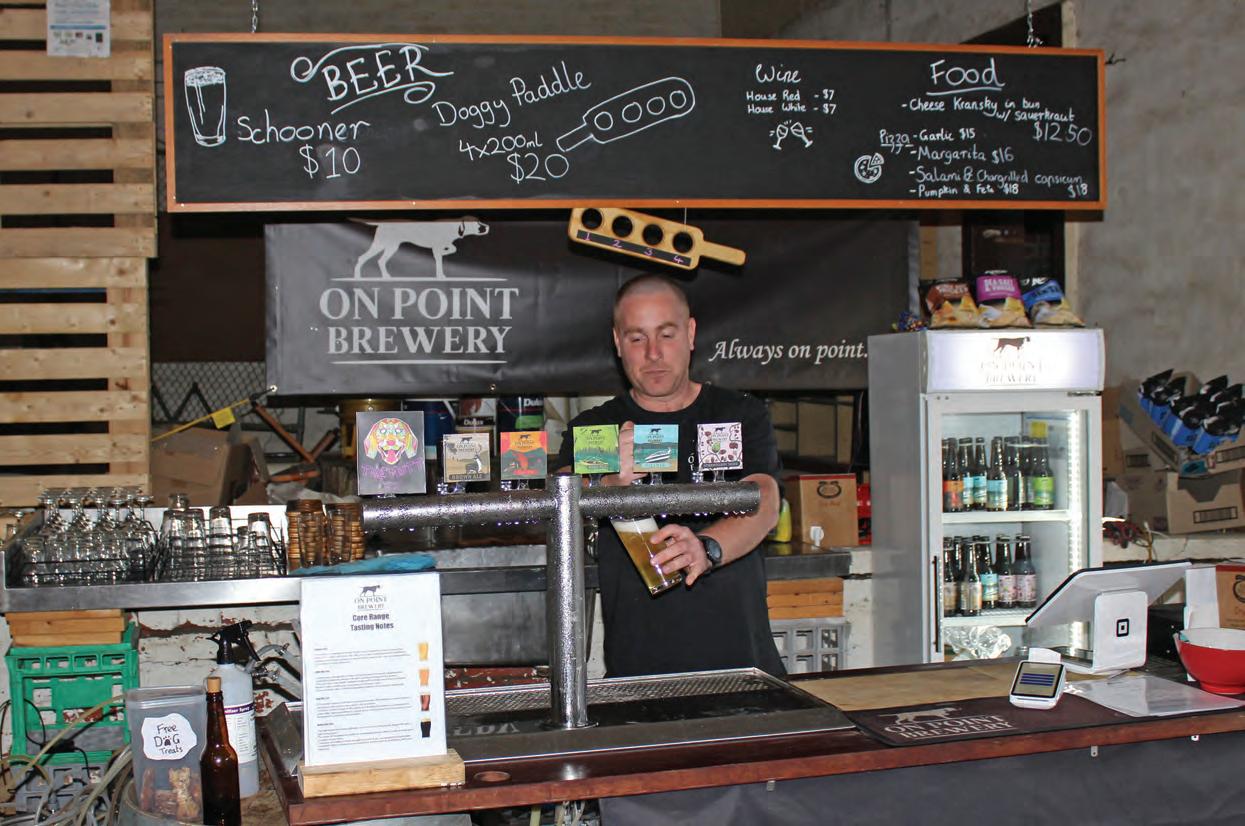
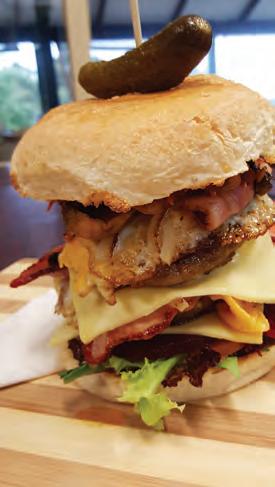

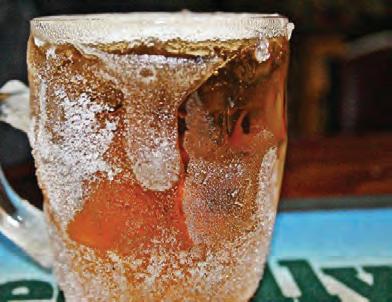
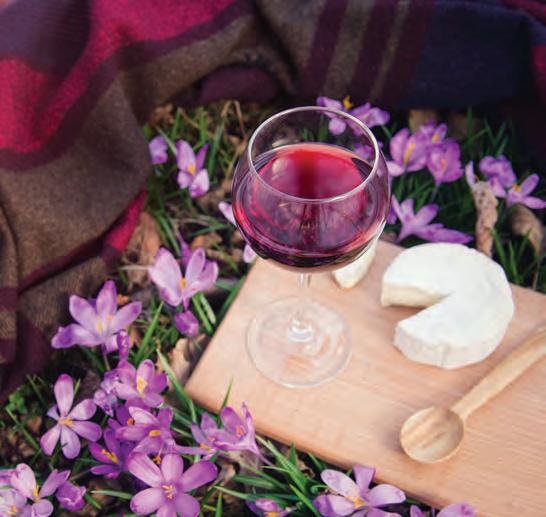










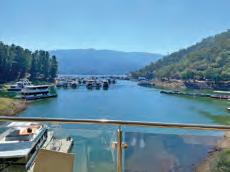

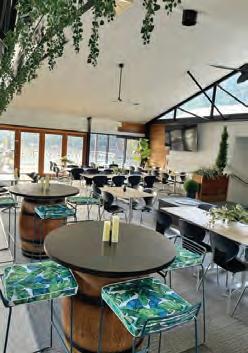





It happens to the best of us: popping down to the shops for something specific and walking away with unplanned extras. Intending to get some gardening supplies one day, Jody Rolfe came out of the Alexandra Garden Centre with a whole lot more.
“I needed to order some plants, and Ian [the former owner] was standing there talking to a customer about selling the nursery, and I ended up talking to him about buying it. So I came to buy some plants and then ended up buying the nursery,” Jody says with a laugh.
Jody took over the site a bit over a year ago, renaming it the Alexandra Garden Nursery. Prior to buying the nursery, she had another shop in Alex where she sold clothes, giftware, and her handmade Dindi Candle Co. products (formerly known as Waxy Aroma Candles).
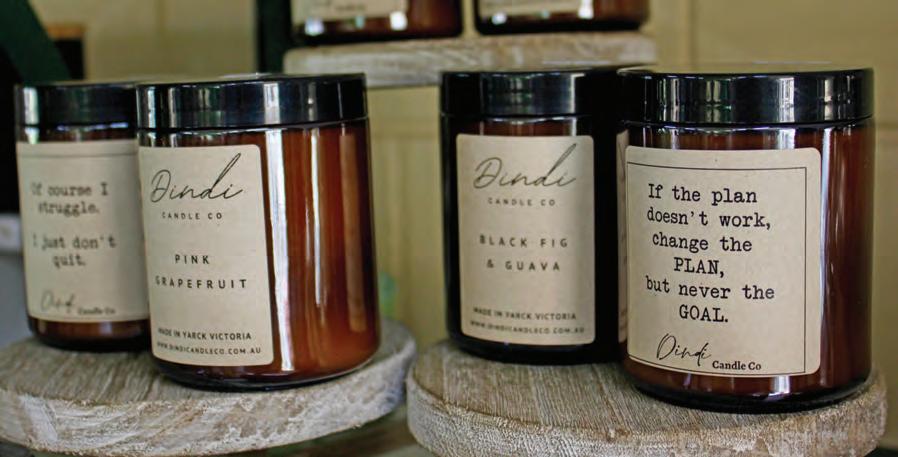

It was in this other shop that Jody met Lynda Hislop, who is now a familiar face to those who frequent the nursery. Like Jody, Lynda went out shopping one day and got more than she’d planned for.
“Lynda and I stumbled across each other when she ventured into my shop down there not long after
she moved to town; we had a chat, and she got a job!” Jody says.
After acquiring the nursery, Jody juggled running both businesses separately for about eight months in 2022, but eventually decided it would be better to merge them. She relocated everything to the nursery, including longtime friend
and casual employee Kerryn Cashion – another familiar face to nursery customers. Jody says the decision paid off, and the unique combination of goods in one place has worked well.
“Two at once was getting a little tricky, so two weeks before Christmas I moved it all into here. It was hectic, but it was good to be in just
The sign says it all: you’ll find a lot more than plants at the nursery. Over winter, the nursery will stock pot plants, barerooted trees, bird baths, and outdoor settings among other things for those who want to keep gardening.

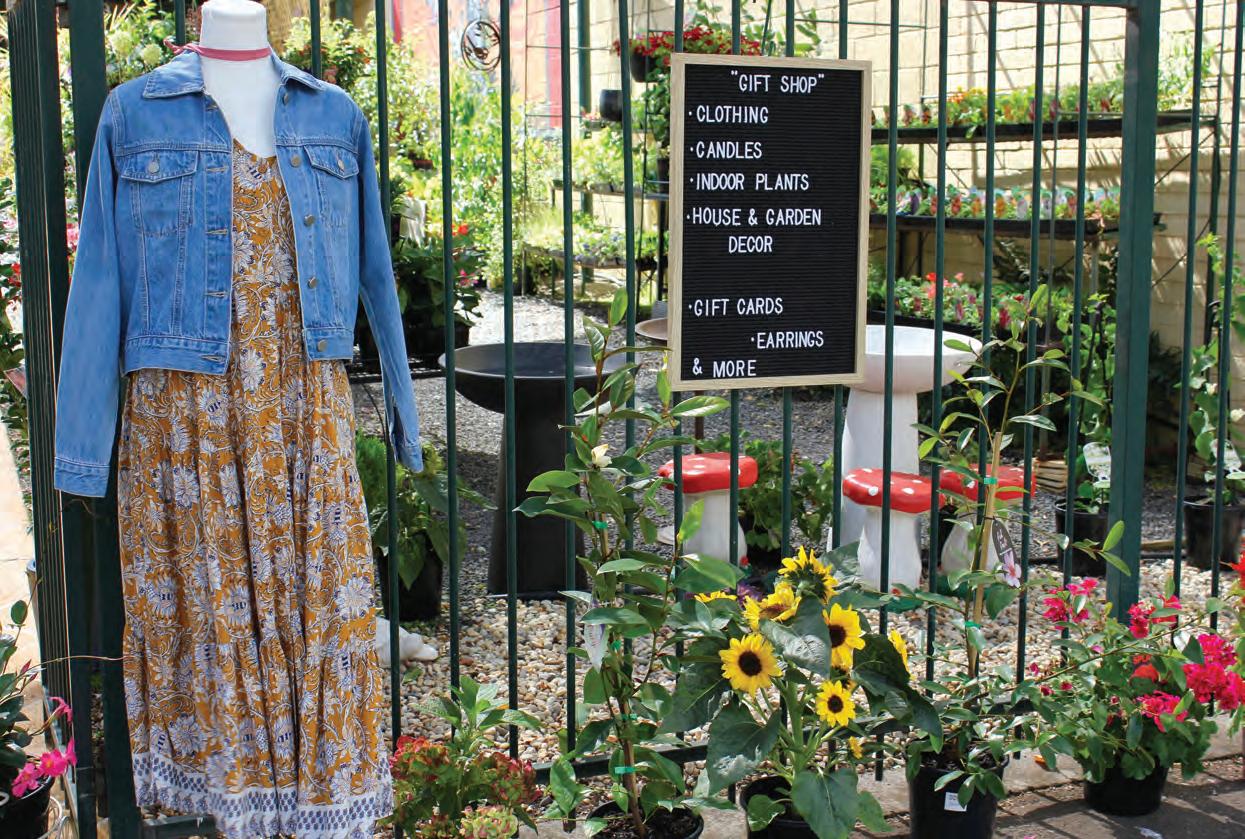
one spot at Christmas time and it’s been amazing.”
You’ve got to offer a few different things, especially in the quiet time. Not everyone’s going to want to buy plants in winter, because not everyone’s going to want to go into the garden when it’s freezing cold, but they’ll want a nice knitted cardigan or candles.”
Jody’s scented soy candles are now stocked on the shelves in the revamped gift shop section of the nursery. She first tried her hand at candle making about nine years ago, hoping to create something better than what she’d bought for herself in the past. The process was more difficult than she’d expected, but she persisted and Dindi Candle Co. grew from her efforts.
“I got started because I got
sick of buying candles that you couldn’t smell, so then I tried to do it myself. I just about gave up because I couldn’t get any scent throw or anything, and it wasn’t burning correctly, so I was like this is not going to work. But one day it just happened, and it’s just gone from there. Every new jar you get you’ve got to test it, you’ve got to try to work out what wick will work, the percentages of oil you need,” she says.
“I just love providing a product that everyone loves. I stock a lot. And I sell a lot. They’re all made with soy wax and all cotton wicks, so low toxicity, and all made at home, all individually made.”
The candles come in a wide variety of fragrances, including the popular black raspberry and Japanese honeysuckle, and there are Dindi Candle Co. scented
wax melts available too. Jody also makes bath salts, mugs and earrings for the gift shop and stocks items from other small Australian businesses. The gift shop is also where you’ll find the indoor plants, which Jody says are “a big seller” and were popular even last winter when she was still finding her feet after recently purchasing the nursery.
“It’s been very hard to build it up. It was very empty when I got here. And because the changeover was in April, I missed the orders for barerooted trees.”
But this winter, with more time to prepare, the nursery will have bare-rooted trees, along with pot plants, veggie seedlings, bird baths, and outdoor settings for anyone who wants to continue their gardening work over the season. If not, there will be plenty in the gift shop and


“some amazing clothes” to browse through.
Whatever you’re looking for at the Alexandra Garden Nursery, Jody and her team will gladly help you find it. You may even walk out with more than you’d planned.
For more information on Alexandra Garden Nursery, check out their Facebook Page (just search for Alexandra Garden Nursery) or call (03) 5772 2335.
Since taking over the nursery, Jody has worked hard to revamp the gift shop. Below: Indoor plants are a year-round favourite for customers.

Two upstairs, fully self-contained apartments with spacious kitchen, dining and living area, 2 bedrooms and decks with stunning views. Accommodates 4-5 people. 27 Murchison Street, Marysville Ph 0408 103 481 www.alpinoapartments.com.au
FLOWERS + HOMEWARES + COFFEE
7 Station Street, Yea Vic 3717 linda@mcauliffe.net.au | 0412322419 flori e casa








Wed-Fri 10am-4pm | Sat-Sun 10am-3pm
COFFEE BAR Toby’s Estate tea & coffee, biscuits, cakes all made inhouse

FRESH FLOWERS direct from local growers
GIFT LINES Commonfolk, Lillydale, Southern Wild Co & Queen Bee candles Huxter, Quail Ceramics, Anna’s Liberty, Lovely Linen, Bell Art, Bespoke Letterpress, 2Duck Market Baskets, Yummy You
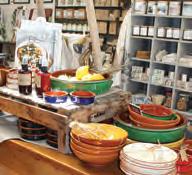

ECLECTIC COLLECTION of vintage, basket ware, crockery, glassware, artwork CARDS AND BABY PRODUCTS old, new and locally made with love

The award winning Flowerdale Hotel offers meals and accommodation with a family friendly atmosphere in an original country style hotel. A great place to break your ride or drive with a classic country pub lunch ~ plenty of parking



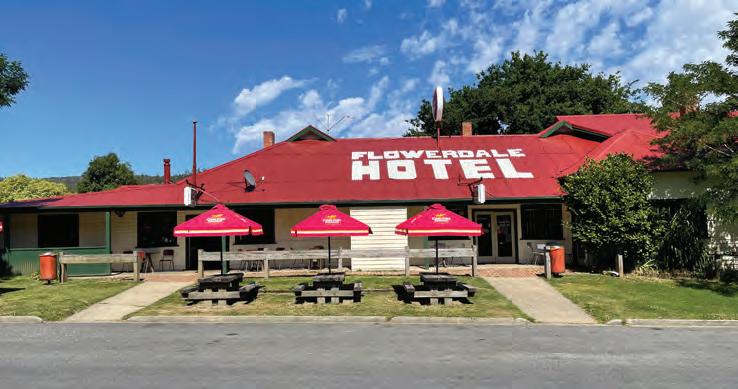
Running a wildlife shelter is not for the faint of heart, especially one that offers a 24/7 emergency rescue service. For Kate Turner, there is no romanticising the reality of her work: driving hundreds of kilometres in a day to attend to injured animals, euthanising those that cannot be saved, caring for over a hundred patients in between, and doing all of this unpaid.
Kate sums up her job description as “basically running around like a headless chook all day”.
And then there are the disgruntled patients to deal with, like Travis the kangaroo who was with Kate at Murrindindi Ranges Wildlife Shelter for nine months while his severe foot wound healed.


“He didn’t like me, wanted to show me how tough he was by trying to kick me. I had to
bribe him with grass, a lot,” Kate says.
Luckily, Travis only weighed 20 kilograms at the time, so his efforts were in vain. Barry the wombat was another difficult client. He had a badly fractured femur and complications meant he was at Kate’s shelter for six months – a long six months by the sounds of it.
“He wasn’t a nice patient,” Kate says.
From an outsider’s perspective, all of this sounds like a lot of hard work for not much thanks. When asked what has kept her going since she first started working in shelters in 2011, Kate is quick with a light-hearted response: “stubbornness”.
“It has to be stubbornness because you wouldn’t be in it otherwise. It costs too much money, and it’s a hard job to do.”
More seriously, though, she says she is committed to
While Kate specialises in cases that other shelters may not be able to handle, such as adult wombats and roos, she takes in a wide variety of native animals in need.
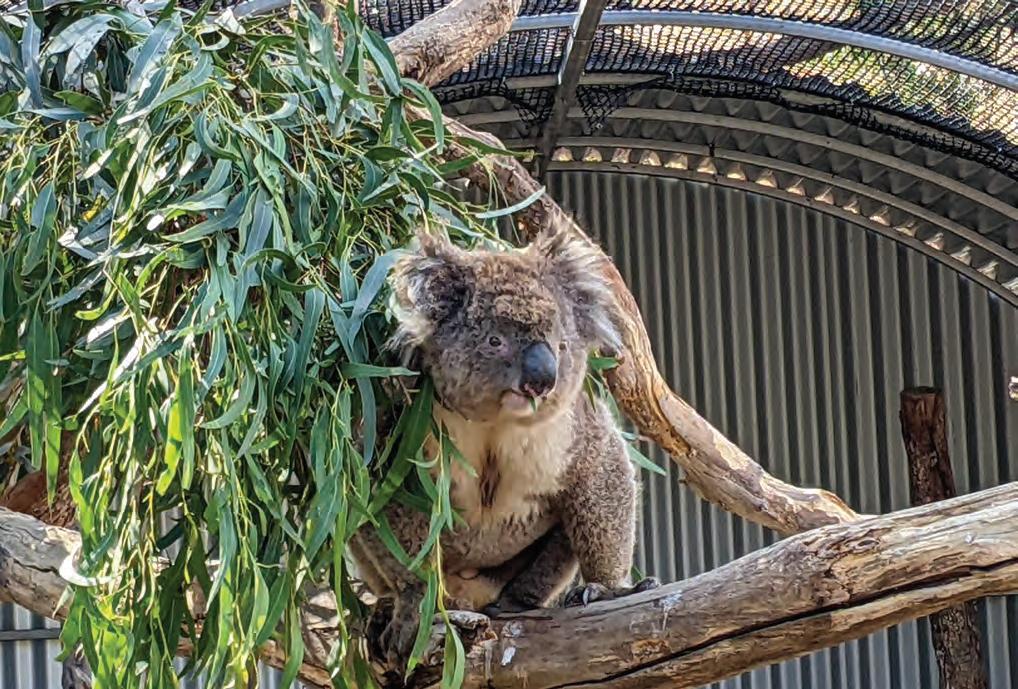
do her utmost to help any local wildlife in need and will do whatever it takes to honour that commitment. As would her dad, she adds, who is heavily involved in the rescues thanks to Kate’s influence.
And while the work may be physically and emotionally gruelling – and often thankless – there is a bright side.
“The reward of releasing animals that wouldn’t normally get given a go is a big driving force,” Kate says. Travis and Barry are cases in point, with both now living their lives out in the wild after lengthy stays at the shelter. Referring to Barry, Kate says, “When we got there in the end it was worth putting up with his attitude for that long.”
Undeterred by the hard work and bad attitudes, Kate has doubled down and chosen to specialise in challenging cases that may be difficult for other shelters to handle, such as injured adult roos and wombats. Kate says her education –bachelor’s degrees in animal and veterinary bioscience and veterinary technology
– comes in handy when managing different cases, but there’s no formal training available in Victoria for what she does.
“It’s just experience that gets you there and having the support of vets to give animals a go.”
Kate has also spent the last seven years improving the shelter’s capacity to care for wildlife in need.
“In 2015, we bought our 150-acre property so that the roos have somewhere safe to live, and we built the shed. Then it burnt down, and then we built another shed, and we’re close to finishing kitting that out – there’s always something to be done. So it’s been a work in progress, but eventually we’ll get there and have it fully set up.
“We’ve got a vet room that we’re working on. We’re still trying to get a lot of equipment so that when vets visit they can use the room, and I can use some of the equipment too because I’ll be able to get the licensing to use it, like the x-ray machine.”
Of course, none of this equipment comes cheap.
Kate says there are many ways people can help prevent animals like these ending up in her care. Some of these include keeping pets contained, slowing down on the roads, and raising the bottom of fences so wildlife can go under rather than over.
Nor do many of the dayto-day expenses, and Kate says donations of time and money are the best ways people can help keep wildlife shelters afloat.

“We do need more volunteers who would like to become rescuers and carers. Financial support for any of the shelters in the area would be a welcome relief because we’re all struggling with trying to find the money to pay for fuel, and the milk that we buy for the roos costs $460 for 20 kilos –I go through that in a month. When I’m about to run out of milk it’s always like dammit, I need to find $460 yesterday.”
Another important means of taking the pressure off shelters is to prevent wildlife injuries. Kate says
that roads, cats, and fences are the sources of injuries in the bulk of her cases, with dogs contributing to a lesser extent. Along with containing pets, Kate’s advice for preventative measures is pretty straightforward:
“With the roads, slow down especially between dusk and dawn. If everyone just wiped ten kilometres off their speedo, that would reduce roadkill significantly; it would give people more time to see an animal before it comes out and be more aware of their environment.
“With fences, kangaroos and other animals would rather go under a fence than over it. So unless you’ve got stock or dogs that you’re trying to keep in, if you can have your fences off the ground
a little bit to allow them to go under. A sight wire on the top would be a great advantage as well – just the white tape that’s usually used for electric fencing can be quite useful. And, of course, getting rid of barbed wire. It’s more of an issue for sugar gliders, squirrel gliders, bats, and birds get caught in it. So if we could get rid of that, that would be awesome.”
Kate also emphasises that wildlife shelters are strictly limited to dealing with injured or orphaned animals – they can’t do anything about the healthy wombat who has happily made its home under your house or the echidna wandering around in your backyard. In these cases, she urges people to do their best to be patient and coexist with wildlife.
“Those animals shouldn’t be moved because wombats in particular are territorial. So we can’t relocate them because it can be a death sentence to them, same with brushtail possums. With echidnas, they could have a baby buried somewhere, so
we don’t want to move them out of their area either.”
Finally, Kate is keen for the public to know that kangaroos, as a species, may not be as tough as people think.
“Only 23% of kangaroo joeys make it through their first year of life with their mum – so 77% don’t make it. A lot of people don’t understand how fragile kangaroos are. And there’s 100% mortality rate during droughts, so their population can’t explode. Mobs should be one or two hundred members strong, not thirty or fifty.”

On the other hand, individuals like Travis have demonstrated a remarkable capacity to bounce back from debilitating injuries when given the chance. Without the Murrindindi Ranges Wildlife Shelter, Travis may not have had that opportunity. And despite being a cranky patient, Kate says success stories like his make it all worthwhile.
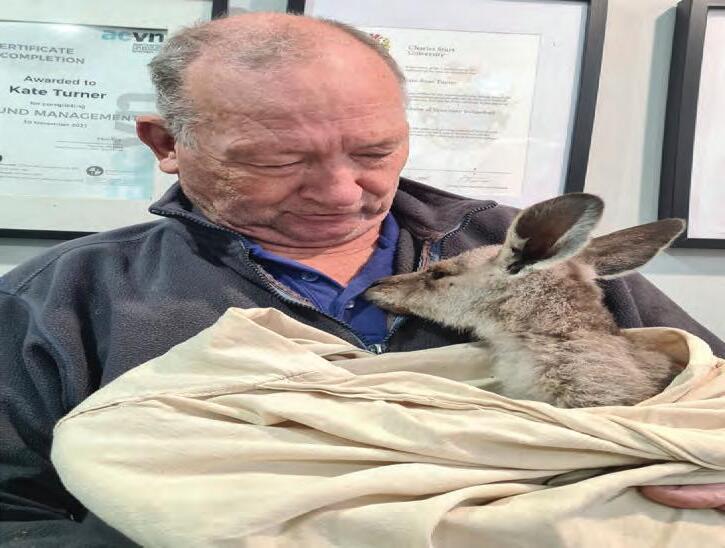
“He was very touch-and-go. It took a long time to get his foot right, but he was eventually released, and he’s
While wildlife shelters can take on injured or orphaned animals, they can’t do anything about healthy critters. An echidna in your backyard is best left there if it’s healthy because it may have a baby buried nearby.

living his life out in the wild now.”
For more information on Murrindindi Ranges Wildlife Shelter (located in Pheasant Creek) go to their Facebook Page: https://www.facebook.
com/MRWSInc or call 0430 440 286
Other shelters in the area are Narbeview Wildlife Shelter in Buxton and Salvum Wildlife Shelter in Thornton.





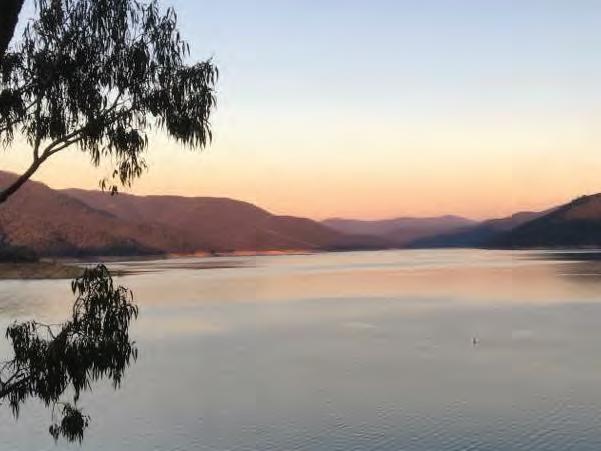


Cats who are contained to their owners’ properties have a better chance at long,
that enclosures are just one option for keeping your cat safe at home while letting them enjoy time outside.
By Emily FriedelWe Aussies love our pets. A 2021 survey found that almost 69% of Australian households are home to at least one pet. The survey also found that pet cats now total around 4.9 million across the continent, a quarter of which were obtained during the pandemic. With these record high numbers of feline furbabies living with us, now seems like the perfect time to talk about the benefits of keeping cats at home. Containing your cat within the bounds of your property is not only better for them, but also better for native wildlife. That’s why RSPCA representative Mhairi Roberts and ecologist Professor John Woinarski both describe cat containment as “winwin”.
For cat lovers, one of the best reasons to keep kitty at home is to ensure their wellbeing. In fact, a Victorian study published last year found that cat owners reported their pet’s safety as the main motivator for keeping them contained. Despite this, research
suggests that around 71% of Australia’s pet cats are allowed to roam. So, what are the potential consequences for these cats that are exploring the great outdoors unsupervised?
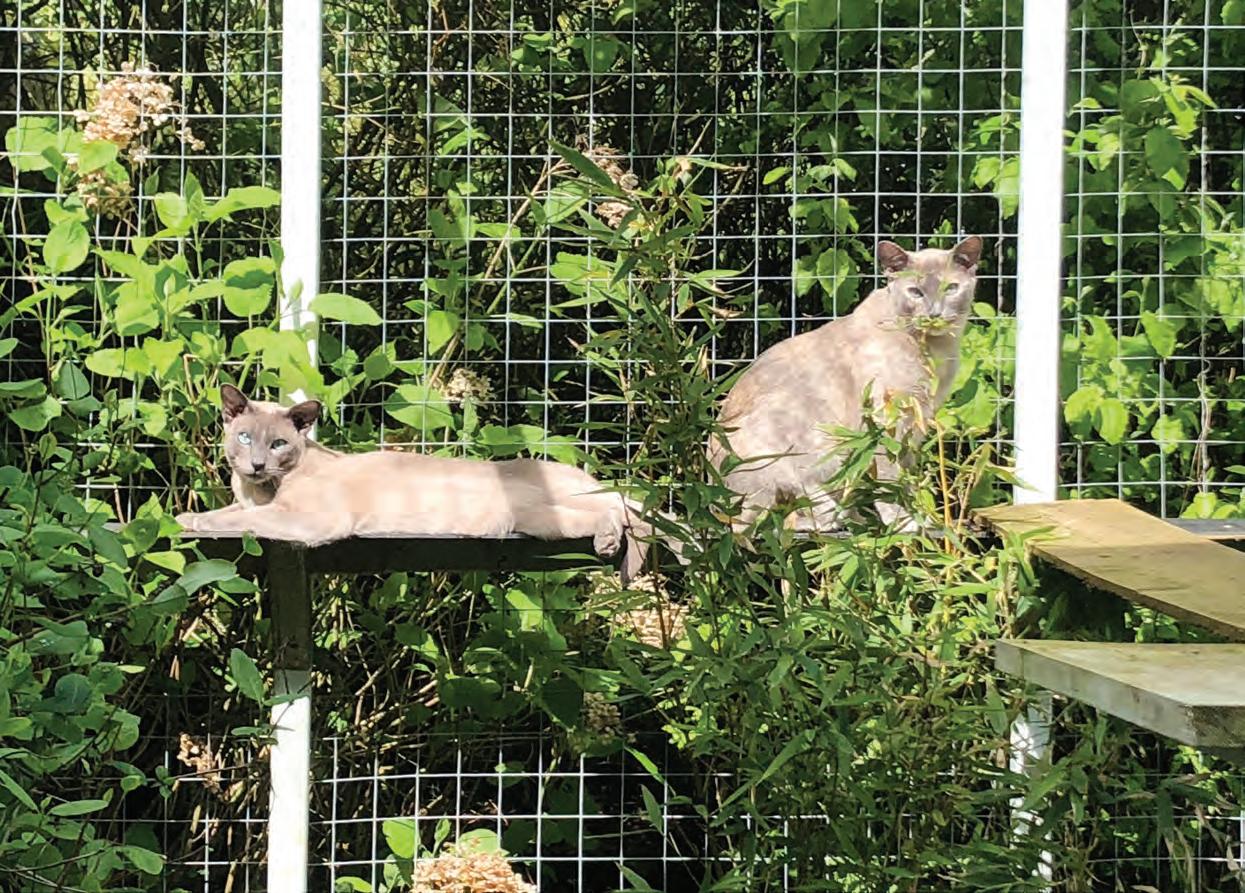
According to Ms Roberts, who is RSPCA Victoria’s Policy and Advocacy Manager and an animal scientist, being out and about on their own is perilous for pet cats.
“If cats are allowed out to roam any time of day or night, there are a lot of risks for them. They can get into fights with other animals, they can contract diseases, they can get hit by cars, they also then have an impact on wildlife too, and that can also cause them injuries. We know that they live longer if they stay at home, and they’re less likely to be injured or contract diseases.”
In terms of longevity, the Australian Veterinary Association has stated that the lifespan of cats who stay at home can be four times longer than those allowed to roam. That’s potentially a lot more time for owners to enjoy with their cats.
Ms Roberts also points out that
keeping cats at home provides more opportunities for owners to develop a deeper connection with their feline companion, which is good for both parties.
“It strengthens that bond between the cat and the owner, and we know that has benefits for people from a mental health perspective. That human-animal bond is really important, it helps people de-stress and have that companionship and interaction with their cats – it’s good for the owner and the cat.”
Pet cats are considered a semidomesticated species, and sequencing their genome revealed they still have a lot in common with their wild counterparts. Among other things, pet cats have retained their abilities as excellent hunters. Unfortunately, these hunting abilities make them a serious and pervasive threat to wildlife. Research suggests that each pet cat in Australia that is allowed to roam kills around 115 native critters per year. Prepandemic estimates put that total at 241 million native vertebrates killed by
Keeping cats at home not only keeps them safe, but also protects native wildlife. Ecologist Professor John Woinarski says cats are very flexible and adaptable predators and consume a wide range of prey, including snakes, lizards, birds, frogs, fish, and mammals. They’ve even been known to take young wallabies as big as themselves.
pet cats annually, but the marked increase in cat ownership since then means their impact is even greater.
Professor Woinarski from Charles Darwin University explains that Australia has suffered more profound biodiversity loss due to predation by cats compared to other continents.
“The reason Australian animals seem so susceptible to cats is largely that there hasn’t been a long period of co-adaptation between Australian native animals and any feline-type predators. Cats hunt somewhat differently to any predators that Australian animals are used to, and Australian animals just haven’t seemed to be able to cope rapidly with evolving to meet that predation pressure,” he says.
Aside from hunting, Professor Woinarski says free-roaming pet cats threaten native wildlife through the spread of diseases, particularly Toxoplasmosis gondii.

“This parasite must go through cats to complete its life cycle, and then the eggs are shed in cat faeces. Animals other than cats pick up the parasite, which works its way through the host’s nervous system, often ending up in the brain and changing its behaviour. But the Toxoplasmosis can also affect pregnancy and stillborn young or young with major deformities.”
While Professor Woinarski acknowledges that the damage done by feral cats outweighs that done by pet cats, he emphasises that the latter is easier to prevent.
Mhairi Roberts advises that there are many ways to enrich the home environment to keep your cat happy, including access to sunny windowsills.

“But as well as all that, largely because Australia’s got relatively low-nutrient soils and is relatively infertile compared to most other continents, many Australian animals have got relatively low reproduction rates compared to the animals in most other continents. So whereas birds in Europe or mammals in Europe could respond to a given predation pressure by cats and still out-breed that predation pressure, that’s not so much the case in Australia.”
“Feral cats are killing more animals in Australia per year than pet cats, so in that sense they’re a more serious problem. But controlling feral cats across the vast extent of Australia is almost impossible at the moment, whereas it’s much more straightforward to curb the impacts of pet cats. There are simple solutions, particularly containment of pet cats.”
Keeping cats happy at home
If you have decided to keep your cat at home, there are many simple
Desexing your cat is another way to promote a harmonious living environment, according to Mhairi Roberts. Desexing may help reduce unwanted behaviours such as spraying and curb the desire to go looking for a mate.
and cost-effective ways to ensure their contentment. According to Ms Roberts, providing an enriched environment at home is central to their welfare.
“Having lots of places for cats to look out windows, having scratching posts, having toys for cats to play with, having plenty of horizontal and vertical climbing spaces, and access to sunny spots to lie in on windowsills. In terms of toileting, having plenty of litter trays for them to use. Some cats might actually like to have a cat friend, so that’s also an option. Those types of things can really help make sure they have a great life at home.”
She adds that there are also easy options for letting pet cats explore outdoors safely.
“You can also let your cats go outside on your property if you can introduce a cat enclosure or cat runs or cat-proof fencing or take your cat out on a leash.”
One potential challenge for cat owners is transitioning their beloved feline from a free-roaming lifestyle to a contained one. However, it’s definitely doable, and the Safe Cat, Safe Wildlife website (a joint initiative by the RSPCA and Zoos Victoria) has practical expert advice for making the change as smooth as possible. Among other things, scheduling regular playtime with your cat is recommended to make the great indoors more enticing. Ms Roberts also explains that playtime can be used to
Scheduling playtime is a great way to bond with your cat and make sure their needs are met at home.
satisfy their desire to perform certain behaviours they’d normally do when adventuring outside.
“You can mimic any of the behaviours they do when they go out and roam at home. You can do what I call predatory play with your cat, so using certain toys for them to be able to pounce and grab onto those toys. It’s also a win for you because you’ll be more interactive with your cat – you can enjoy that time with them as well.”
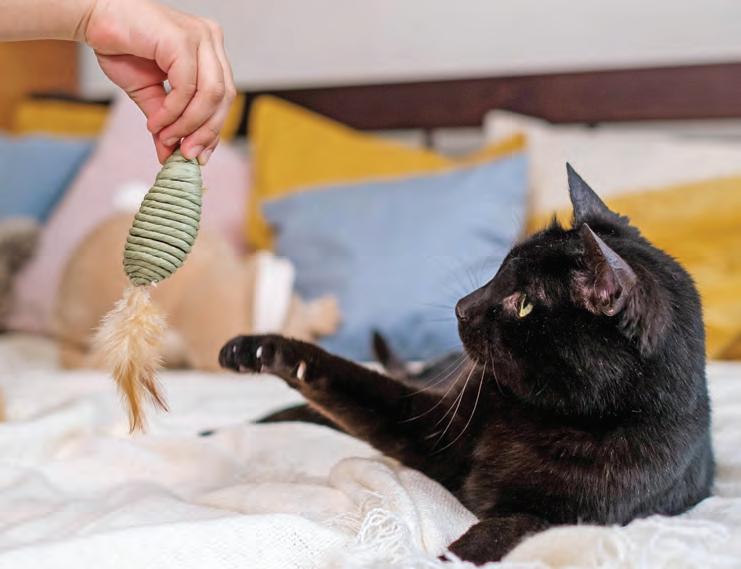
This extra bonding time is also a chance for owners to reap more of the mental health benefits of cat ownership. Given these benefits, perhaps keeping pet cats contained at home is better described as a win-win-win situation: cats, wildlife, and those who love their cats all stand to gain.
For more information on keeping cats at home and ‘cat hacks’ for enriching their environment, go to the Safe Cat, Safe Wildlife website: safecat.org.au

Shop

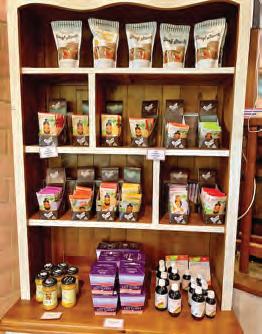







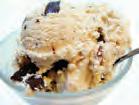



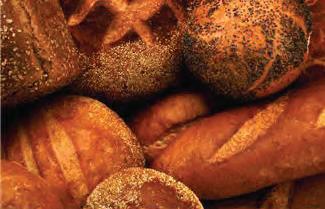
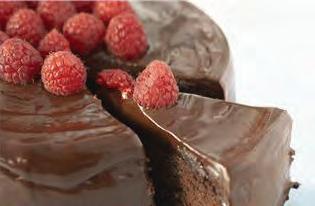

Anyone with a native garden in the Murrindindi Shire is sure to be familiar with New Holland honeyeaters, especially if there is an abundance of plants such as grevillias and banksias, their favourite foods. With a fine, curved beak and a long, brushtipped tongue, this little bird is perfectly designed for slurping up nectar from the inner recesses of even the tiniest flowers. In fact, it’s brushed-tipped tongue is so efficient it can absorb all of a flower’s nectar in one second.
But nectar is not the only source of food for these energetic and endearing birds. They are also very adept at snatching insects from the air and can often
be seen performing awe-inspiring acrobatics in pursuit of this prey. Fruit, sap and honeydew – a sweet, sticky substance excreted by sap-sucking insects – may also form part of their diet.
“New Holland” might seem to be a strange name to give an Australian native bird, but it was the name given to our country by the first Dutch explorers to reach our shores. Subsequently, some birdwatchers have been heard to light-heartedly call the bird the “Dutch honeyeater”.
New Holland honeyeaters are easy to identify. Predominately black and white, with a striped breast and a startlingly white eye, they also sport
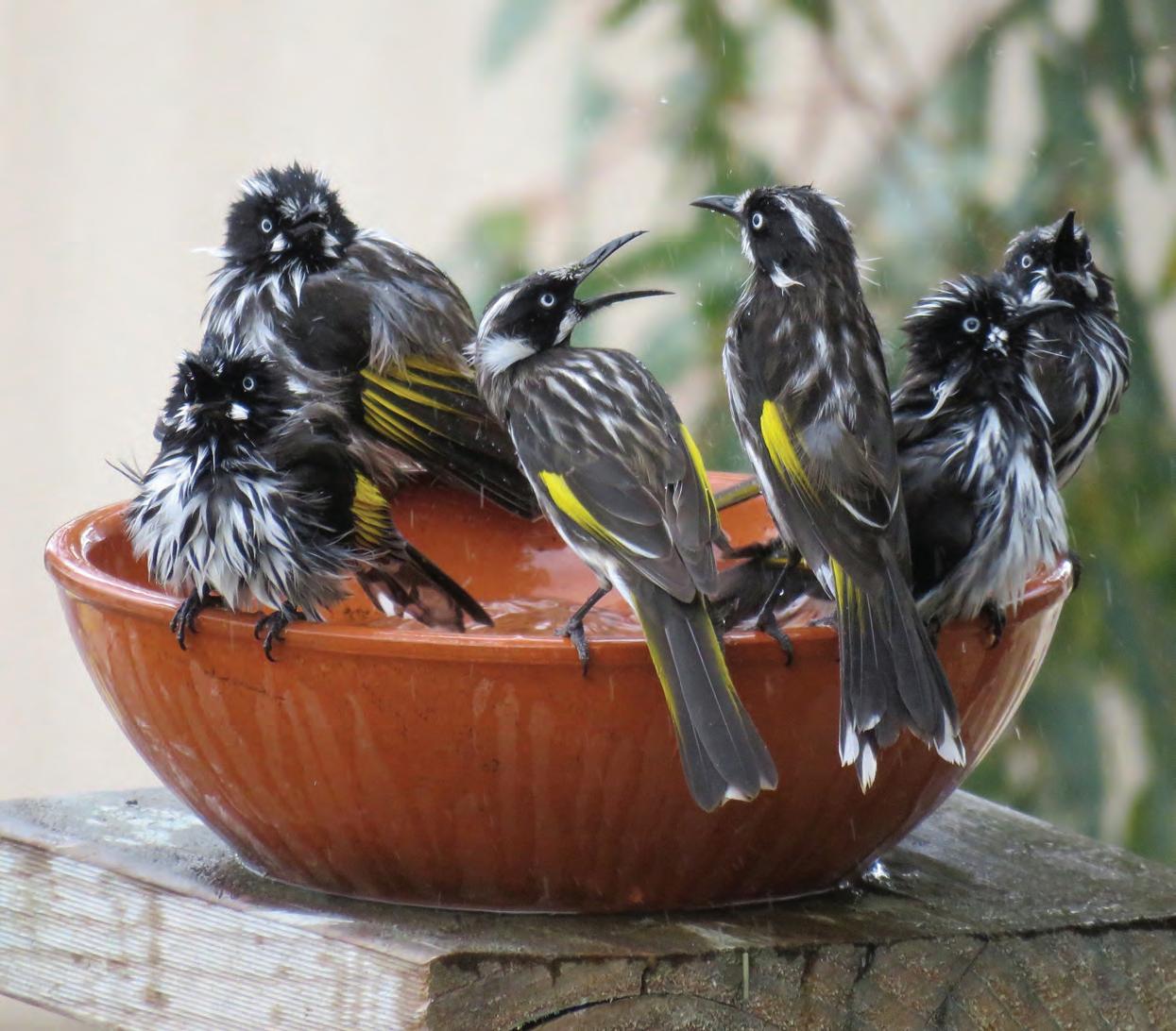
yellow patches on their wings and yellow margins on their tails. The sexes are similar in appearance, although the female is slightly smaller than the male. Juvenile birds tend to be more brown than black and have grey, not white, eyes.
These birds are found throughout the margins of eastern and southern Australia from Brisbane to just north of Perth. They are not found in the dry interior of the country. Their favourite habitats are eucalypt forests and woodlands, coastal heathlands, parks, gardens and golf courses, particularly when there is an abundance of plants in flower.
If they are around, it’s hard not to notice
them, as they tend to flit rapidly and flamboyantly from flower to flower issuing a series of high pitched “chik” or “pseet” calls. While they are not too bothered by human presence, they are quite merciless in chasing other small birds out of their territory. Even larger birds have been known to be “mobbed” by a group of these flapping and chattering honeyeaters. New Holland honeyeaters breed a couple of times year,
Above: New Hollands often feed on non-native species such as fuschias. Jim from Adelaide, Australia, CC BY-SA 2.0 <https://creativecommons. org/licenses/by-sa/2.0>, via Wikimedia Commons
usually in autumn and spring, when plants such as eucalypts, banksias, correas, callistemons, melaleucas and grevilleas are in flower. They build a cup-shaped nest made of grasses, twigs and bark, which they then bind together with spiders’ webs and line with soft, fluffy plant material. The nest is placed in a large bush or tree anywhere from one to six metres above the ground. The female lays two to three eggs which she incubates for two weeks. Once the eggs are hatched, both sexes feed the chicks until they are ready to leave the nest after another two weeks.
The average life expectancy of these honeyeaters is two years, although bird-banding studies have discovered individual birds that are over fourteen years old. Their conservation status is classed as “secure”, meaning there is little or no threat to their populations at the moment.
The New Holland honeyeater makes for a cheeky and cheerful presence in any garden. The best way to make your garden attractive to these delightful birds is to plant a dense understory of flowering plants. While native species such as banksias, grevilleas, bottlebrushes and correas are firm favourites, these birds are known to feed from over a hundred different varieties of flowering plants, including non-natives such as fuchsias and camellias.
Having a bird bath, and keeping it regularly topped up with fresh water, is another “must” for attracting these birds. They just love to have a bath! Even when there aren’t many plants in flower you will find the New Hollands – as well as other birds –coming to have a dip and a drink.
Finally, you will need to keep your pets, especially your cats, inside. Because these birds often feed on low bushes, they are a prime target for cats. If you take these few simple steps you will have, in no time, lots of New Holland honeyeaters bringing colour, movement and joy to your garden.


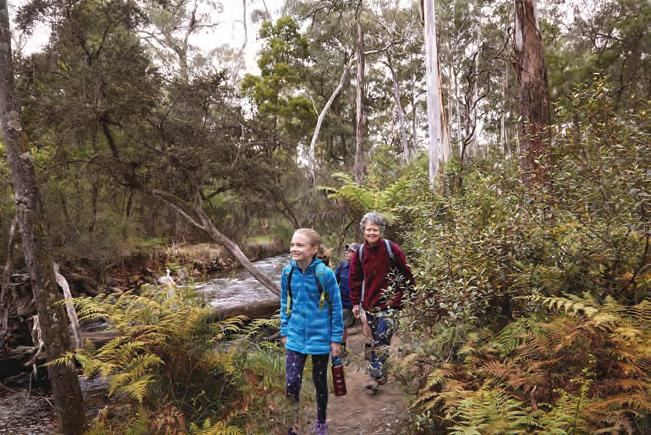
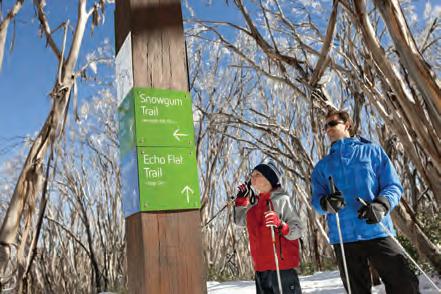






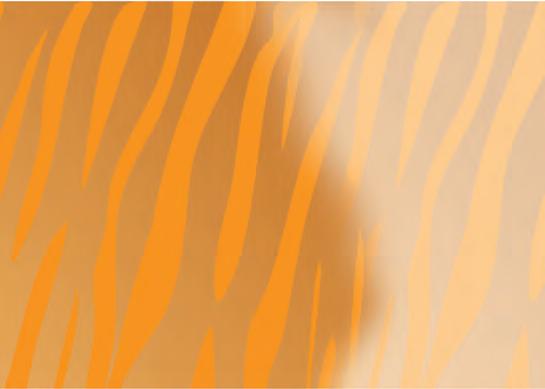
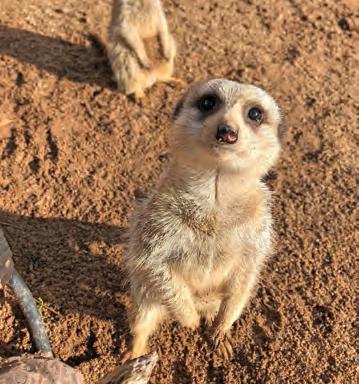




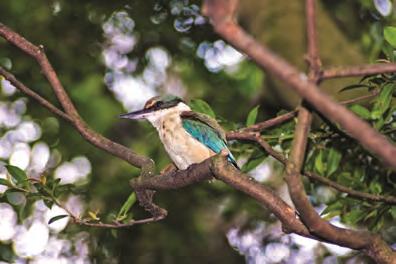

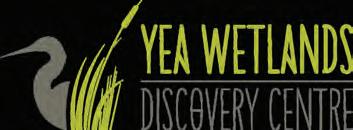




Now in our 12th year, we thought it was high time that we launched a brand-new website to offer you – our readers and advertisers – an enhanced digital experience.
Since the Murrindindi Guide is the original Murrindindi Business Directory, serving the Shire for over a decade, the feature that we’re most excited about is our revamped business directory (of course!). As it always has, our directory lists local businesses and service providers in the area that advertise in the Guide, as well as events, tourist attractions, community groups and more. The business directory is an excellent resource for both residents and visitors alike to learn more about the events and attractions in Murrindindi Shire, or to search up a service or product you’re looking for, keeping your shopping local where you can. With our new online business directory, each listing can have its own photo gallery (up to 10 photos), links to website and social media profiles, service and product listings, and more. Next up, our new website boasts a PDF viewer that allows you to browse and read both current and past editions of the magazine online, meaning that
you won’t need to go to ISSUU to read our magazine. Listing the full archive of our past issues, you can access our extensive collection of stories, news items, and feature articles that highlight the region’s unique culture, history, and people.
Our new website also features the same articles from our print magazine, which cover a wide range of topics, including the area’s tourist attractions and events, native flora and fauna, local organisations, businesses, and people. Our intention with these articles has always been to provide our readers with a deeper understanding of Murrindindi Shire and its people, making you feel more connected to your community.
And our last feature highlight (but certainly not least!) there will be accompanying photo galleries for our articles wherever possible. Showcasing the region’s natural beauty, native flora and fauna, event photos, product photos, or business features, these galleries allow you to explore the visual beauty that many of our articles are about, enabling you to discover new places to visit, activities to do, sights to see, products to buy, or to simply revel in the natural beauty of Murrindindi Shire.
Coming soon, our website will also have an event calendar that will list upcoming events in the area. Whether it’s a community festival, a local art exhibition, or a list of the farmers’ markets throughout Murrindindi Shire, our calendar will provide a comprehensive guide to what’s happening in Murrindindi.

We want to assure you that the new website is a complement to the print magazine, not a replacement. We know that many of you feel that there is no substitute to having a hard copy of a publication in our hands, providing some much-needed time to unplug from devices, and we wholeheartedly agree! However, we also feel our new website is an excellent addition to the Murrindindi Guide, providing you with a convenient, accessible, and engaging way to experience the magazine’s content, if you so choose.
Visit the website today at murrindindiguide.com.au to discover all that Murrindindi has to offer!
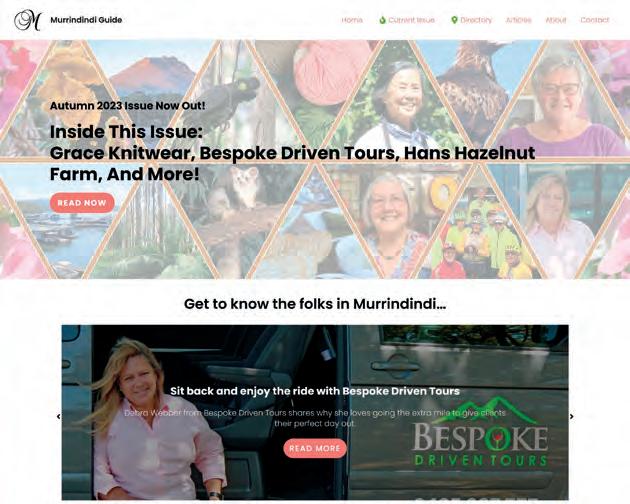
Interested in advertising in the Murrindindi Guide?
Reach out via our contact form on the new website, or by emailing sales@murrindindiguide.com.au






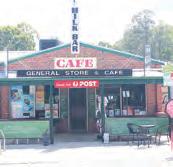


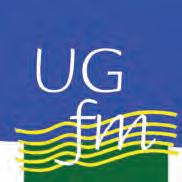

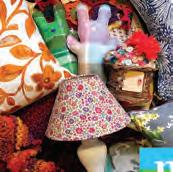
Shelters: beside the Goulburn River between Tallarook and Goulburn Valley Highway, Goulburn River near Kerrisdale, Cheviot Tunnel, Eglington Cutting, Merton Gap, Woodfield Station and Olivers Road Mansfield.
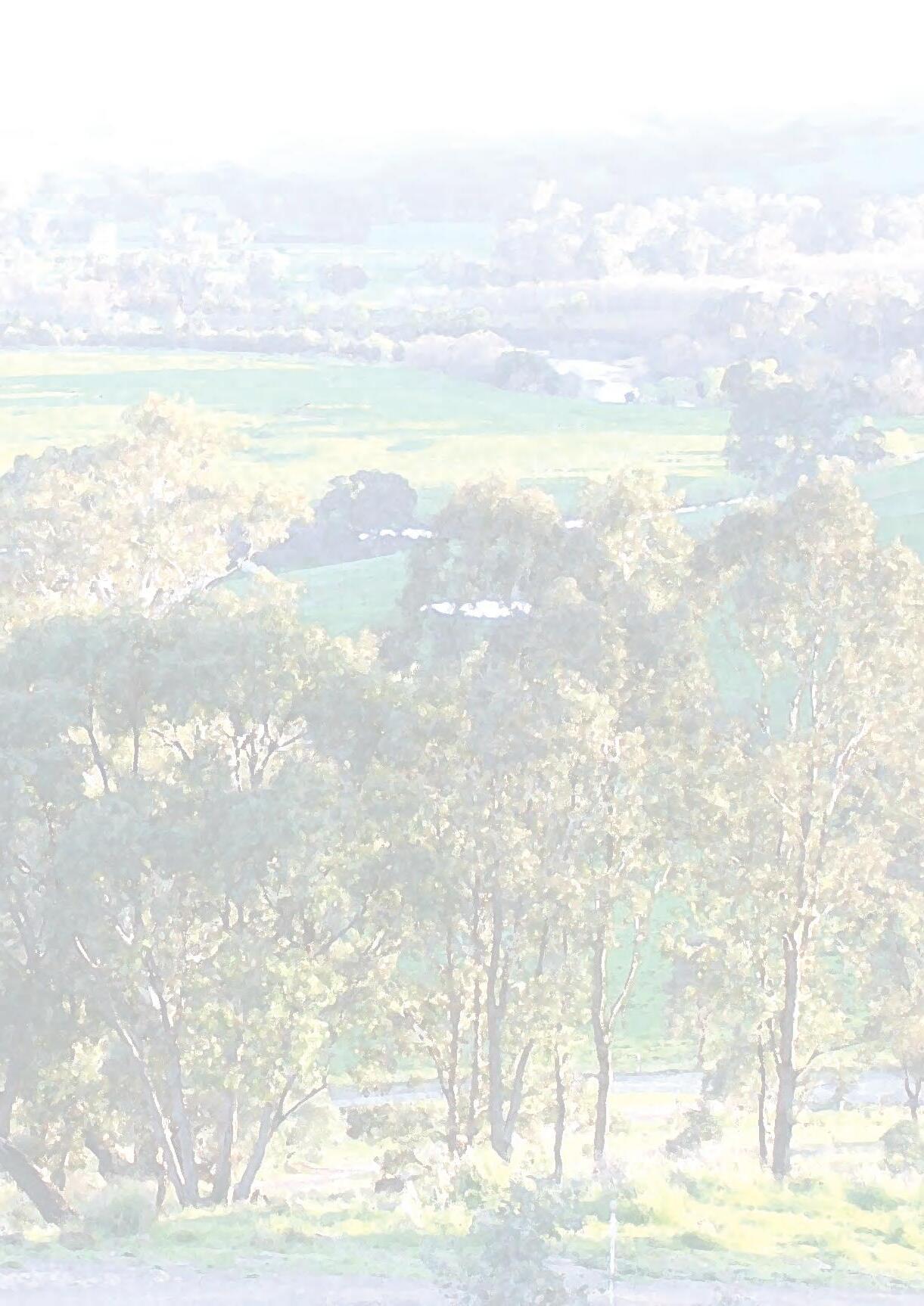
BBQs available at Tallarook, Yea, Alexandra, Bonnie Doon and Mansfield.

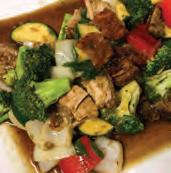



Public toilets as indicated on map and also located at Tallarook, Yea, Yarck, Alexandra, Bonnie Doon and Mansfield.








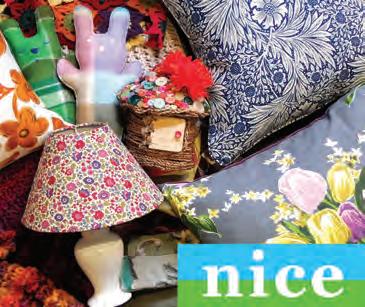




Pre-loved, affordably priced books and magazines which you can peruse at your leisure in a comfortable reading area
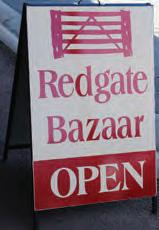
Opening hours Mon 11.30am-3pm, Tues & Wed by chance or appointment
Thurs and Fri 11.30am-4pm Sat and Sun 10.30am-5pm
Catherine Wherry and Jeremy Morrison
Ph 0400 418 139 or 0488 353 940 6591 Maroondah Highway Yarck books.at.yarck@gmail.com

• E-BIKE $85 per day• HYBRID BIKE $50 per day
Mobile Service & Workshop
12
Start and end your rail trail experience at the Timber Tramway. Train rides, kids’ activities and refreshments
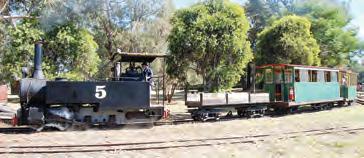
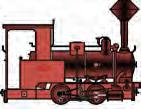
Station Street, Alexandra Open 2nd & 4th Sunday 10am to 4pm Group bookings welcome Alexandra Market 2nd Saturday of each month Ph 0427 509 988 www.alexandratramway.org.au

15
Alexandra Bakery & Cafe

70 Grant Street Alexandra Ph 03 5772 2272
• coffee and varieties of teas
• large variety of traditional sourdoughs

• cakes and catering for special occasions
• large variety sandwiches and rolls
21 William Street, Alexandra 0417 179 313

• 20 powered • 50 unpowered sites available for caravans, campers and motorhomes in a quiet location great for rest and relaxation
• Toilets • Showers • Laundry • Drinking water • Dump point • Power hookups
• Children’s playground • Pet friendly
Goods from Near and Far
The ideal spot for preloved and recycled wares
Tue-Sat 10am-3pm Sun & Mon CLOSED
59-61 Grant Street Alexandra Enquiries 0407 683 712
Alexandra Motor Inn
17
76 Downey Street (Maroondah Hwy) Ph 03 5772 2077

alexmotorinn001@bigpond.com.au www.alexandramotorinn.com.au
16 comfortable units, including family rooms, interconnecting suites with queen size beds. Each unit has en suite, reverse cycle airconditioning, large plasma TV, tea and coffee making facilities, toaster, microwave, refrigerator, wireless internet available. Lawned courtyard, BBQ and children’s play area, big boat parking, solar-heated salt water swimming pool



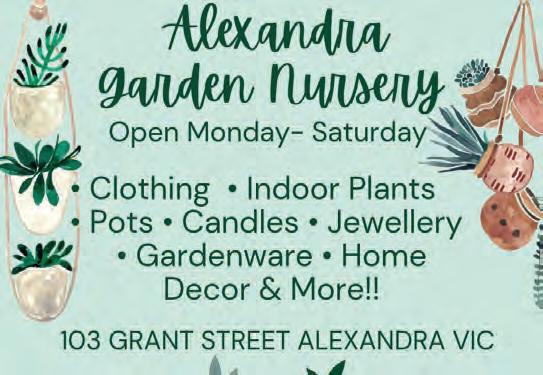

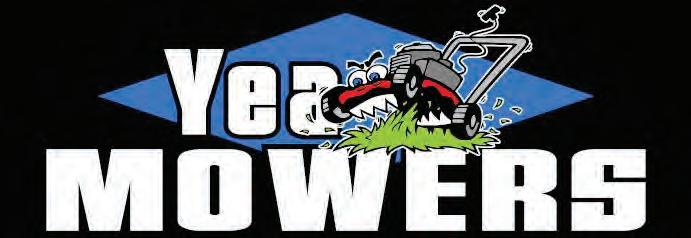


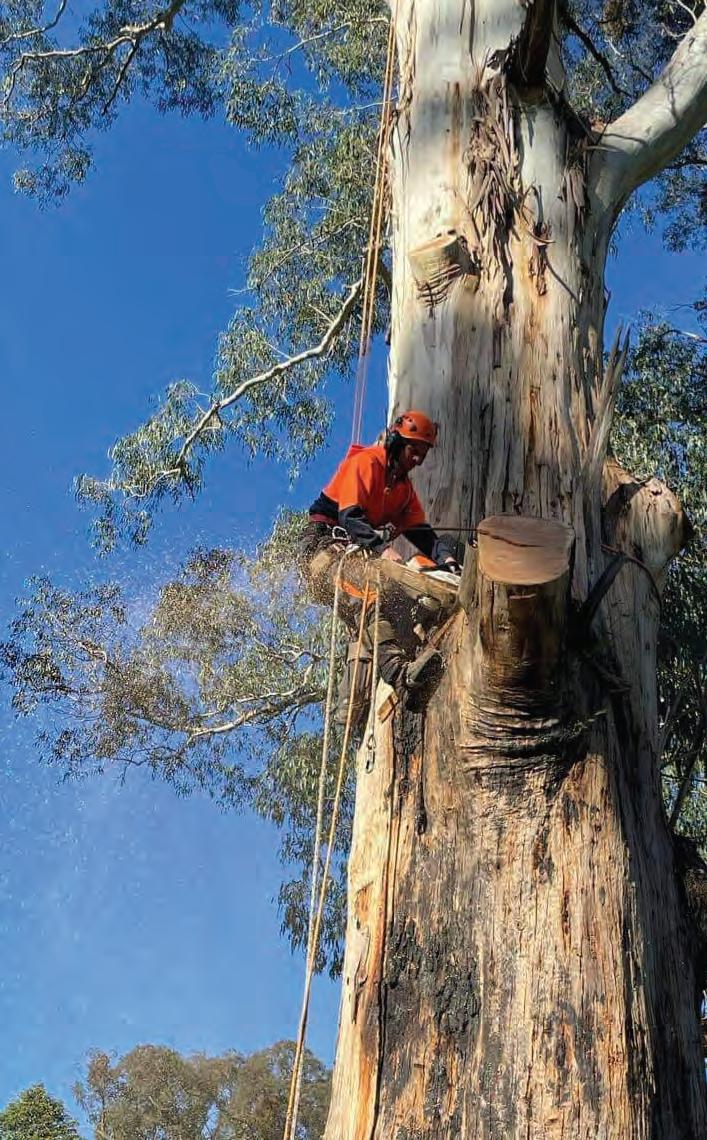
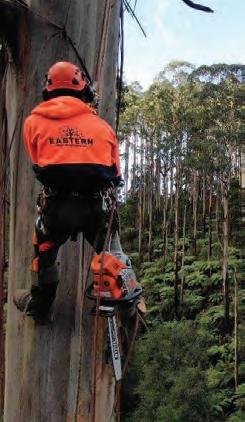

Above:
Below:
by Darcy FrenchMurrindindi is one of Victoria’s most diverse regions, traversing mountains and low-lying plains, thick rainforest and dry scrubland, alpine streams and wide meandering rivers. Of course, this is what draws residents and tourists alike to this beautiful corner of the world.
But begin to explore Murrindindi, and you’ll quickly realise that our forests, woodlands, and plains – and the animals and plants that call them home – are even more dynamic and small-scale than first meets the eye. Microclimates, meaning “a local set of atmospheric conditions that differ from those in the surrounding areas”, abound across Murrindindi, with trees on one hill not always resembling those of the next, and animals common in one patch of forest absent around the bend. Learning to notice the subtle (and not so subtle) microclimates of Murrindindi Shire will reveal previously hidden treasures and increase the intrepid explorer’s chances of spotting that elusive bird, marsupial, reptile, or tree.
An understanding of microclimates is also crucial to conservation efforts and state and national parks management. Many of our most vulnerable native animals require specific climates and vegetation types to thrive. This makes knowing the favourite patch of Leadbeater’s possum or the superb lyrebird crucial in protecting endangered species and assessing damage after storms, bushfires or floods.

There is no better place to begin our exploration than at the far south, where the southern escarpment of the Kinglake Ranges contrasts sharply with the fertile plateau and valleys only metres to the north. If you’ve never noticed how abruptly the landscape changes,

I encourage you to take notice the next time you’re winding your way up the mountain.
Due to its exposure to oncoming winds and rain for millions of years, the southern escarpment is steep, highly eroded, and rocky. The topsoil is heavily degraded, having washed down into the Diamond Creek hundreds of thousands of years ago. This has resulted in an ecosystem characterised by short, gnarly eucalypts reaching barely ten metres in height, and an abundance of grass trees, undoubtedly one of Australia’s most unique plants. The animals of the southern escarpment are also highly specialised. There are few ground-dwelling marsupials to be seen, but a plethora of woodland birds, snakes, and even echidnas, who love to feed on the ants that thrive in the dry, degraded soil. This environment is also the only place you’re likely to see the elusive and rare lace monitors of Kinglake, although I am still waiting for that lucky day!
As arid and rugged as the southern escapement is, you don’t have to travel far for a complete change of scenery and a whole new suite of plants and animals. Dip down into one of the deep gullies of the southern escarpment, and you’ll immediately notice the shift from grass trees to towering ferns and the distinctive calls of lyrebirds that call the deep gullies home.
However, travel a few hundred metres further up the mountain and everything changes again. Within moments, soils become deep and dark, bracken fern and small shrubs carpet the forest floor, and gnarled eucalypts give way to mountain giants. Relative protection from the oncoming weather protects the soil, allowing mountain ash and grey gums to reach heights exceeding 50 metres, creating an entirely different forest than

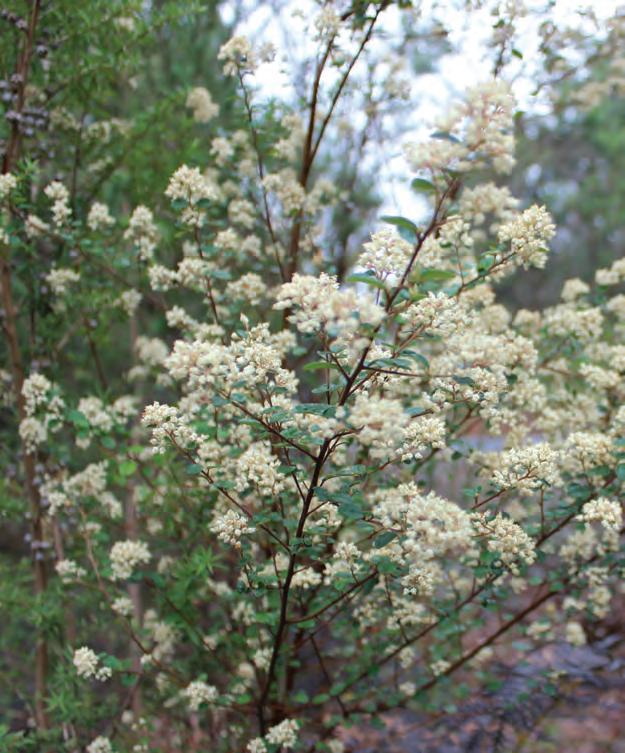

In places like Kinglake National Park, you can notice that the landscape shifts quite quickly from drier forest like this to forests dense with towering tree ferns as you move down a mountain. Below: Dead tree trunks become living sculptures in the Wirrawilla Rainforest.

that growing only a stone’s throw away. These towering forests are home to a much wider array of flora and fauna, from possums and gliders cruising the canopy, eagles soaring the skies, or platypus and rakali paddling mountain streams. Travel a few kilometres further into Murrindindi Shire, and you may come across one of Australia’s rarest and most endangered plants. Growing in only a tiny patch of forest between Kinglake and Toolangi where climate, soil, and topography combine in perfect harmony, the innocuous round-leafed pomaderris is the perfect example of a vulnerable species reliant on microclimates for its survival. Loved by native bees and insects, this small, lightly scented shrub with white flowers blooms in early spring each year. After the 2009 bushfires, it was almost wiped out, with its small patch of forest decimated. It is only due to a surviving seed bank and the ongoing efforts of conservation groups such as the Kinglake Landcare group that it still exists today. It may not be glamorous, but the pomaderris shows us how vital understanding microclimates is if we want to protect plants and animals in a changing climate.
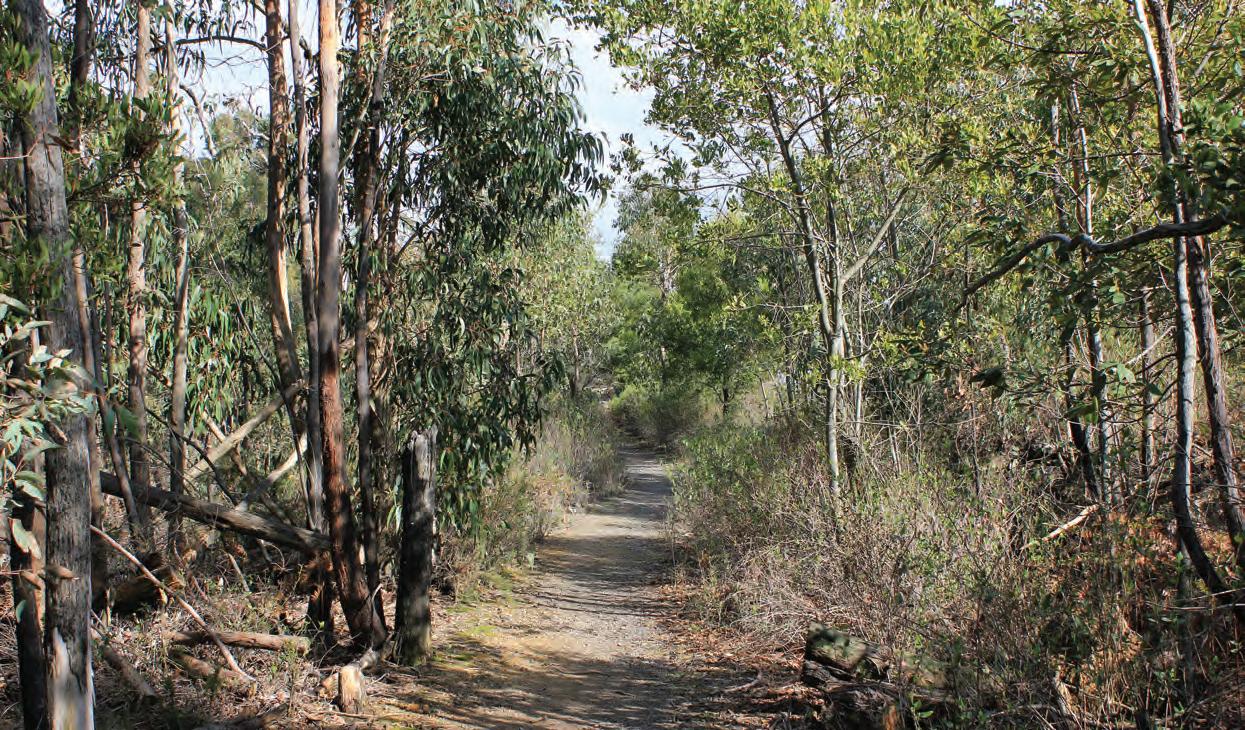
The final microclimate I want to explore is the breathtaking Wirrawilla rainforest in the Toolangi State Park. In an innocuous valley in this expansive forest lies a magical world of mosses, lichens, and towering tree ferns, more akin to something out of Lord of the Rings than hot and dry Australia. Fortunately, this richly biodiverse microclimate is accessible to all. Meander along the recently upgraded boardwalk taking in the many mosses, lichens, and ferns that absorb all sound in this silent forest, or gaze up at ancient myrtle beech and sassafras trees found almost nowhere else in Murrindindi Shire.
Microclimates are everywhere because, ultimately, no two patches of forest are the same. So the next time you’re exploring your backyard or a far-flung corner of this great shire, notice the ever-changing cast of plants and animals that make up our forests and plains. Soon, you’ll realise that our home is more dynamic than you could have ever realised.







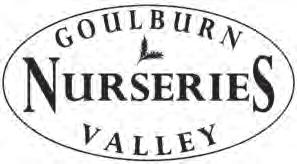










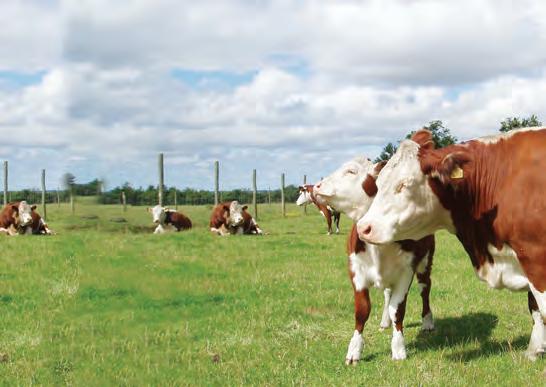
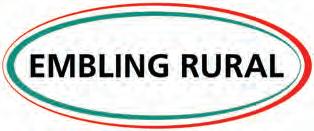


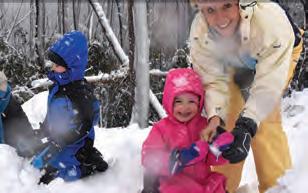



The Shire of Murrindindi and surrounds offers some of the best recreational fishing opportunities in Victoria. Here fishers are spoilt for choice with pristine mountain streams, the Goulburn River tailrace fishery and, of course the majestic Lake Eildon. Framed by mountains, hills and green pastures, this region is renowned for its wonderful and diverse fishing. This region is home to the most popular river and lake fishing destinations in Victoria – Lake Eildon and the Goulburn River near Thornton. Surveys by the Victorian Fisheries Authority (VFA) show more than 200,000 anglers value Northeast Victoria as their preferred fishing destination with more than 50,000 fishers going fishing in this region each year. The annual economic benefits from fishing related tourism in this region is estimated at more than $200 million dollars. The Murrindindi
region is the heartland of fishing activity in Northeast Victoria. Anglers visiting Murrindindi region, chase brown trout, rainbow trout, redfin, Murray cod and golden perch.

The VFA is expanding its fish stocking program and in 2022, more than 10 million fish including 12 species were stocked into 239 waterways throughout Victoria. This has helped recover threatened fish and created exciting new fisheries, particularly in the Murrindindi region. In the last decade, more than 6.3 million fish (Murray cod, golden perch, and trout) were stocked into Lake Eildon. In the last few years, the VFA has also stocked hundreds of huge (3 to 6 kg) broodfish rainbow trout ‘stonkers’ at accessible land-based locations along the Goulburn River. This has extended the long tradition of
releasing ex-broodfish from the Snobs Creek hatchery into the Eildon Pondage.
Brown and rainbow trout are abundant in the cool rivers and creeks of this region. Favourite methods include walking on rivers and creeks and casting lures (spinners, small diving lures and soft plastic) or fly fishing (wet fly’s yearround and dry fly fishing in the warmer months). Bait fishing is also popular which can be active (drifting a weighted worm down a river reach) or passive –sitting back and waiting for a bite, using worms, powerbait, mudeye and other local baits. Most creeks and rivers hold strong populations of trout year-round however fishing is closed between June to September to protect spawning fish (trout and salmon specific regulations –VFA). The Goulburn River from Eildon to Alexandra is regularly stocked and has
been providing some incredible fishing for brown and rainbow trout in recent months. Trout are also readily caught in Lake Eildon by flat trolling tassie devils or diving lures or by using paravanes or downriggers. Trout prefer cooler and deeper water during summer so getting the lure down at this time of the year can work very well.
Redfin can be found in deeper pools of larger rivers but are most often targeted in Lake Eildon. They travel in large schools and are often found at the base of submerged trees. Here anglers use worms for bait, small jigs, blades, or lipless crankbaits. If you haven’t caught a reddie in 10 minutes, move to the next tree and repeat. Depth sounders are very handy to locate redfin schools that can pop up anywhere throughout the lake.
Golden perch are most abundant in Lake Eildon and are most active in November when they school together to breed. At this time of the year, they are readily caught by trolling diving lures and bibless crankbaits just out from the bank in 2 to 4 metres depth. Golden perch also respond well to spinnerbaits or diving lures cast at snags. Golden perch in Lake Eildon can grew very large (up to 8 kg) but most fish are in the 2 to 3 kg range.
Murray cod are Australia’s largest freshwater fish that are revered by recreational fishers around the world. In the last decade, because of fish stocking, Lake Eildon has emerged as one of the best Murray cod fisheries in Australia. When conditions are right, its not uncommon to encounter several 1 metre plus Murray cod in one fishing session. Murray cod respond to many of the same lures as golden perch but make sure your lures are bigger and strong enough to withstand a Murray cod strike. In the last few years, high resolution active target sonar technology (livescope) has dramatically improved Murray cod catch rates at Lake Eildon. Murray cod are now regularly caught at night using huge surface
lures, particularly in winter and at night.
Here are some handy links for those looking to cast a line in Murrindindi:
Where and when are fish stocked? Fish stocking database - VFA
Where can I find fishing regulations?
Recreational Fishing Guide - VFA
Goulburn River Fishing Festival?
Goulburn Fishing Festival 2022 - VFA
Where are the land based and boating locations? Upper Goulburn - VFA
What’s next for fishing in the Murrindindi region
The VFA remains committed to sustainably managing your fisheries and improving fishing opportunities in the Murrindindi region and in all our rivers, lakes, estuaries, bays and offshore across Victoria.
In late 2022, the Victorian State Government committed an extra $96 million of investment over the next four
years into even better facilities, more fish stocking and improved access, whether you fish from a boat, a beach or a pier.
As part of that $96 million package, commitments include:
• Another 10 million fish will be stocked annually across Victoria to create amazing fishing opportunities and recover threatened native fish species.
• $5 million to the next major stage of works at Snobs Creek Fish Hatchery to rebuild the 80-year-old ponds and accelerate efforts to re-establish fish populations of Macquarie perch and trout cod.
• 60,000 Little Anglers Kits will be delivered to primary school aged kids in every corner of the state – helping kids learn about fishing, have fun with their families and boost vital jobs in regional communities.
To read more about all the exciting things underway for fishing – check out the VFA webpage!
Hot spots Target fish Best time Tac tics
Lake Eildon Murray cod Year round Boating, trolling, and casting big lures
Golden perch November Trolling lures and casting at snags
Redfin Year round Worms and vibes around tree trunks
Trout Year round (best in Flat trolling year-round and down cooler months) rigging in summer
Goulburn River Trout Year round Walk the banks casting spinners, Rapala CD3, (Eildon to Alexandra) (not in closed season) wet or dr y fly
Align trip to trout stocking (stonkers)
Rubicon River Trout As above As above (not closed season)
Acheron River Trout Year round As above (not closed season)
Other creeks Trout As above Use light gear and a good set of waders and rivers
Eildon Pondage Trout
Winter and Spring Align trip to trout stocking (stonkers) school holidays
The Murrindindi region is the heartland of fishing activity in Northeast Victoria. It hosts some of the most popular fishing locations in Victoria and enjoys a tremendous fishing reputation. The fishing in this patch offers year-round and diverse fishing opportunities that appeals to those who target trout and native fish.
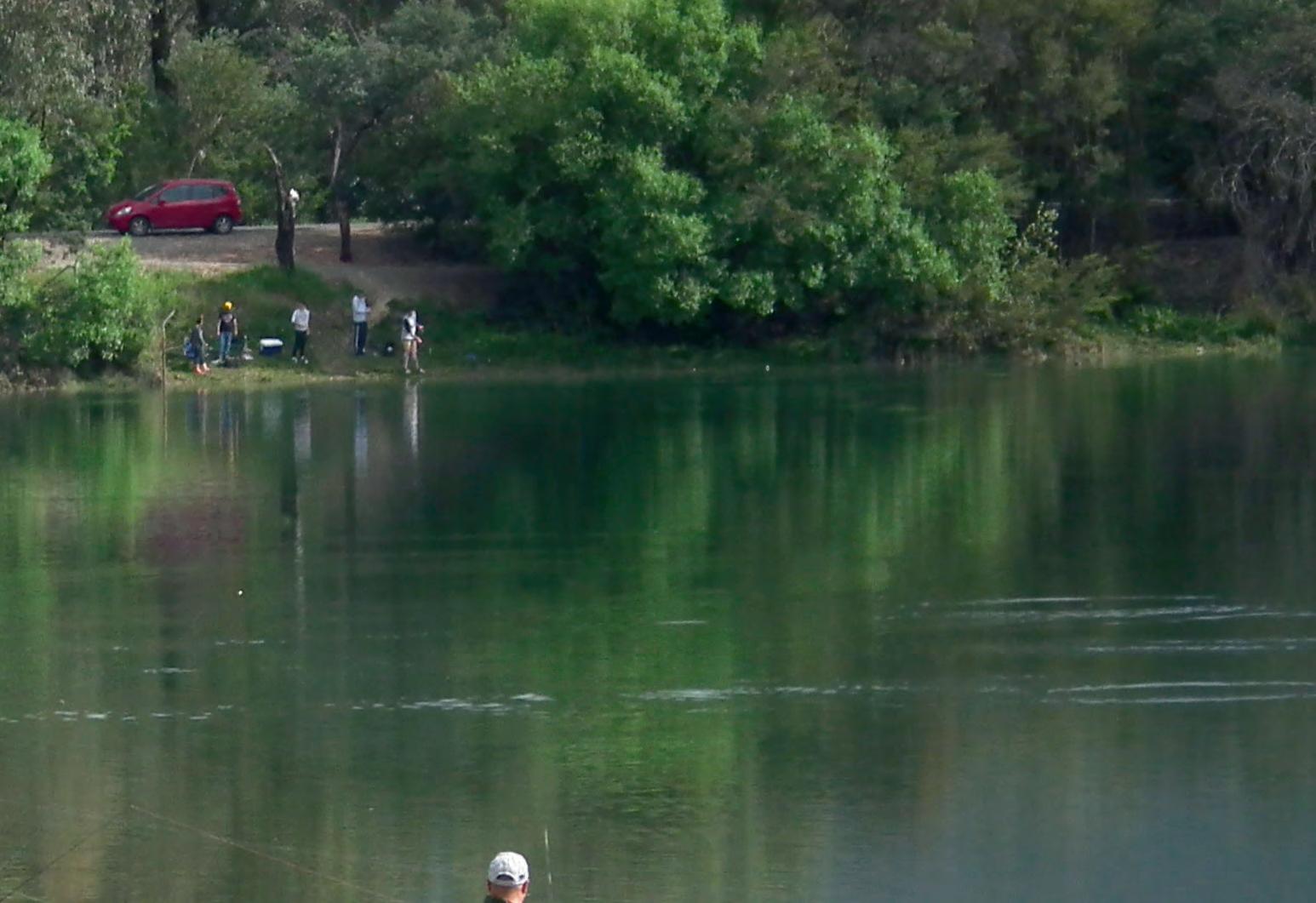
FREE EVENT / EILDON
Saturday 2 September, 10am - 4pm
New location: Lions Park, Riverside Drive, Eildon
• Market stalls
• Spinning wheel prizes

• Snobs Creek Hatchery tours


• 2000 ‘stonker’ rainbow trout to be released at 11 sites


• Vic Fish Kids Clinics Eildon Pondage ( bookings essential ) www.vfa.vic.gov.au/goulburnfishfest

The trout season will be coming to an end at 12.01am on Tuesday the 13 of June until 11.59pm on Friday the 1st of September in all our rivers and tributaries for all hook and line fishing.
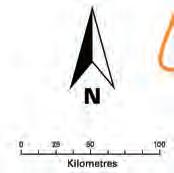
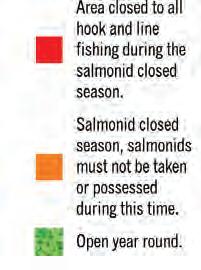
Eildon Pondage is a great place for a day or two to come and fish with the family. It has a regular stocking of both rainbow and brown trout of all sizes coming from Victorian Fisheries main hatcheries just up the road at Snobs creek. When these fish are released into the pondage, they can be caught on all types of bait including powerbait, local dough, worms and mudeyes (dragon fly larvae), lures and flies. Hot areas to fish are Burke Road, Riverside Drive, the old footy oval opposite the town and Cemetery Point.
To fish for trout in Lake Eildon it pays to have a watercraft to be able to access the large arms and deep water for some trolling using lures like Tassie Devils, Rapala, and Stump Jumpers. A speed of 2kms per hour or a speed that has your lure working efficiently is recommended. There are also options for land based fishing the arms and inlets. Casting lures or bait fishing with a floating rig is recommended with first
and last light is the best time for this method of fishing.
Lake Eildon hosts a large variety of fish from English perch (redfin), roach, trout both rainbow and brown, yellow belly, European carp (which must not be returned to the water alive) and the mighty Murray cod.
Most of these fish become less active during this time, mainly due to the low water temperature but trout and large Murray cod really become active and your chance of catching a large sized Murray cod increase. Baits such as large yabbies, chicken fillets, scrub worms, or cheese chunks will attract these fish. Large lures like swim baits, spinner baits, deep diving lures and surface lures are all used.
Fishing from the shoreline around the lake can be very productive, especially around fallen timber and deep dropoffs where there are large rock or slate formations, as these areas are prime spots for a large cod to hold up and ambush its prey. Fishing by watercraft can make this easier especially with the help of a fish finder or depth sounder, moving around the lake and finding structure or steep drop-offs as well as finding the fish is a massive bonus.
June 1 is the start of the Murry crayfish season with this ending on 31 August, the daily limit of two crayfish per person and size limits of a minimum of 10cm carapace length and a maximum of 12cm carapace length apply – female crayfish carrying eggs under their tail must be released immediately. Measuring devices can be obtained from your local tackle shop or by calling Victorian Fisheries customer service centre on 136 186.
The use of chicken frames, ox hearts or fish frames work well for the crayfish with many anglers reporting them even grabbing their worms intended for the fish they are targeting. Deep rocky areas with submerged timber are prime spots to target during the day with the shallow flats and weed beds of a night.
The Goulburn River and Lake Eildon have different regulations on equipment used so check the Victorian Recreational Fishing Guide for all your necessary information. A date to remember is 2 September for the Goulbourn Fishing Festival held at Riverside Drive along the pondage with casting clinics for all ages, trout related produce and cooking demos as well as trade stores and the stocking of huge 10kg rainbow trout in the pondage and rivers.






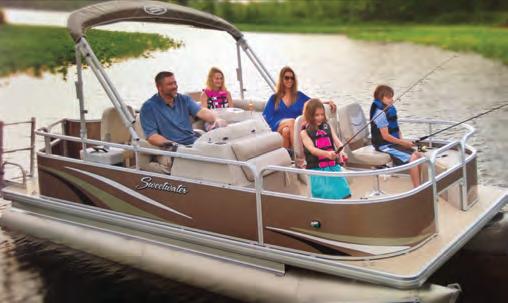


Mudbash is an annual motorsport event run by the Rover Scout section of Scouts Australia. Held at Mafeking Rover Park in Caveat on the King’s Birthday weekend in June, it is the largest Rover Scout event in Australia with over 1,500 participants and visitors annually. Mudbash puts the best aspects of Rover Scouting together. Among the weekend’s activities are adventurous expeditions, competitive on-site activities, scouting camp craft, exciting nightlife entertainment, and of course motorsport!
Mudbash first started in 1972 at Big River Campsite, with five Rover crews and their $50 modified vehicles. To avoid the environmental impact that the buggies had on the state forest, Rover Scouts Victoria made the decision to look for land to continue to run Mudbash and future Scouting events. In 1992, a 130-hectare property was purchased in Caveat, about 30 minutes out of Yea which soon became Mafeking Rover Park. Ever since, the park has been owned and operated by the Victorian Branch Rover Council alongside the Mafeking Park management group and hosts a range of camps and motorsport competitions year-round. The park offers a diverse landscape of open land, scrub and bush providing a variety of camping opportunities and areas to explore for all members of Scouting and the wider community. Over the years, Mudbash has changed and grown into the event we know today and has quickly become a staple event in the scouting calendar.


Motorsport has been a part of Rovers for over 50 years with Mudbash celebrating its 50th event last year. Rover Scout Motorsport (RSM) oversees and manages the safe participation and running of motorsports events in affiliation with Motorsport Australia’s requirements. Vehicles competing in Mudbash are built, repaired, and raced by Rover Units across Australia. Vehicles range from modified sedans and hatchbacks to rear engine frame buggies. Every car is different, has its own name, number and some would say personality. Over 150 drivers enter each year to represent their Rover Unit and compete for the winning title. Each driver is required to have the appropriate Motorsport Australia speed license to compete. Mudbash is the final and biggest event of the Rover motorsport season.
Although Mudbash is primarily a motorsport event, there is a range of other onsite activities to entertain non-racers during the weekend. If Rovers are not spectating the racing or hanging with friends around a campfire, they can have a go at archery and axe throwing, play a round of mini golf or compete in the Rover X Games. At night, live music and DJs entertain the crowds and friends huddle around campfires to the crack of dawn.
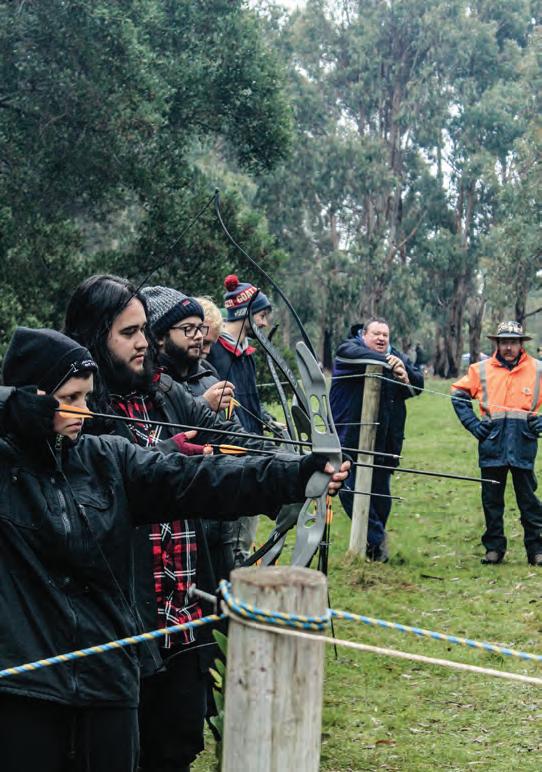
Mudbash is proudly run by Rover Scouts for Rover Scouts. The event is organised and managed by a committee of around 40 Rovers, elected into their position at the annual AGM. Any 1826 year old member of the Rover section can be nominated for a position on the committee. Although there is a lot of work involved in getting an event like Mudbash up and running, it is one of the most rewarding experiences a Rovering career can offer.
The Mudbash Open Day held on Sunday 11 June between 10am and 5pm showcases the best of scouting! Open to all who are interested from motorsport enthusiasts through to families looking for a day out. Mudbash open day offers an array of fun family activities and motorsport action!
We will have a range of onsite activities open to all including passenger hot lap rides in the race cars (12+), motorsport spectating, abseiling, radio activities, axe throwing, mini golf, bush golf, archery, a smash car, commando course, face painting, a BMX course, damper making and an onsite canteen. We welcome all to come and experience the fun and action of Mudbash and see what scouting has to offer!

Sunday 11 June (King’s Birthday Weekend) 10am-5pm
Cost: Gold coin donation on entry. Free entry in Scout uniform.
Location: Mafeking Rover Park, Caveat
Directions from Yea: turn onto the Goulburn Valley Highway which heads to Seymour. Approximately 3km from Yea, the Ghin Ghin Road (marked by a Mafeking sign) branches right and heads through Highlands and Caveat to Mafeking Rover Park.
Directions from Seymour: head towards Yea, under the railway line and turn left onto Highlands Road (marked by Mafeking sign ‘Highlands’ sign) just before Mitre 10 and Seymour High School. Once on Highlands Road you do not need to turn until you reach the T-intersection at Highlands and turn left on the Ghin Ghin Road (which comes from Yea).
Contact: Ben Courtney E: chair@mudbash.com Sienna Brown E: media.communications@mudbash.com


Kelly Wilsmore is a local, community-based practitioner. Co -manages with Ophthalmologists.
• Fully equipped • Fully qualified
Eildon Chemmart Pharmacy

18A Main Street EILDON VIC 3713
T: 03 5774 2626
Libby Gobbart
PHYSIOTHERAPIST
B.App.Sc.
(Physiotherapy)
APAM, Cred MDT
54A Downey St
Alexandra
Ph 03 5772 2649
Shop
Bakers Lane Alexandra 0439 205 999
P: 0438 527 455 96 High Street Yea 0427 216 724
F: 03 5774 2525
alexphysio@aapt.net.au

Covering all aspects of podiatric care including: general foot care, diabetes, high risk foot, musculoskeletal including foot pain and biomechanics, orthotic therapy, footwear and paediatrics
body & soul
1 hour customised massage $80 or 45 minutes for $60
11 Main Street Eildon
Instagram: Beauty and Bling Hairdressing Facebook: Beauty and Bling Hairdressing Eildon
Denise Holschier
Remedial Massage Therapist 0409 814 344 d.holschier@bigpond.com
78 Grant Street, Alexandra
Holistic blend of remedial, relaxation, myofascial release, trigger point therapy.
Jessica’s 97 Grant Street Alexandra Ph: 03 5772 3322
• Manicure & Pedicure (BioSculpture & Dip Powder)

• Relaxation & Hot Stone Massage


• Skin Care & Facial Treatments

• Lash Treatments (Tints, Lifts, Extensions)
• Waxing Specialists
• Spray Tanning
• Body Treatments
jessicas.sheer.beauty@hotmail.com www.facebook.com/JSheerBeauty

Mon to Fri from 9am-5.30pm & Sat from 9am-12.30pm 101 Grant Street, Alexandra
The Photo Lab within the Alexandra Community Pharmacy has a state of the art digital kiosks.
For After Hour Emergencies Only: Cinoj Thomas – 5772 3060
Ian Davis – 5772 2185 or 0409 354 782 Visit www.alexandrapharmacy.com.au for a full list of products & services provided or call 5772 2153 to speak to our trained staff

It’s widely accepted that active outdoor play is essential for healthy childhood development. Being outside, especially in natural settings, offers kids endless opportunities to develop their physical, mental, and social capabilities. Unfortunately, the lure of climate-controlled, screenfilled indoor environments can make it difficult to get youngsters outdoors, especially when the cold weather starts to roll in. But there are distinct benefits to outside winter play that make getting the little ones rugged up and out the door worth the effort.
The first benefit may be surprising to those who were warned by their own parents that going outside in the cold would give you a cold. According to a Pennsylvania State University newsletter, being outdoors actually reduces the risk of catching a cold or flu. More recently, researchers have added COVID-19 to the list of things you’re less likely to pick up outside. The viruses that cause these illnesses can accumulate in indoor spaces and be recirculated through air vents, and physical distancing is more difficult indoors. So even though cold and flu viruses tend to be more abundant in winter, venturing out in the cold gives kids a better chance of avoiding them.
Kids who play in nature during
winter may also have a better chance of fighting off any viruses they’re exposed to. Spending time in natural environments has been shown to boost the immune system. There may be several reasons for this, including the established stress-reduction effects of being in nature. Interestingly, chemicals plants release to protect themselves from microbes may also directly enhance immunity. Research has demonstrated that these compounds, called phytoncides, improve human immune function. Therefore, more time outside in winter could well help protect the little tackers from the germs they encounter indoors.

Winter conditions also provide children with a unique chance to investigate the natural world and nurture their inner scientist. First-hand observation of the outdoors at this time of year helps to develop a better understanding of local seasonal changes – what happens to the landscape and how does it differ from other seasons? There are also plenty of interesting cause-and-effect relationships that can be seen during winter, such as the sun’s warmth melting morning frost. Children may also observe phenomena they want to research more – for example, what makes fog (and for those in certain parts of the shire, why it sometimes hangs around all day)? Outdoor play is known to help children’s cognitive
development, and there’s no reason this benefit shouldn’t extend through the colder months.
As with cognitive development, children’s need for physical development doesn’t stop just because the weather gets a bit chilly. Outdoor play is one of the easiest (and best) ways to get kids moving. In fact, many studies use outdoor play as a proxy for measuring physical activity because the two are so strongly correlated. The Australian Institute of Health and Welfare reported that in 2011–12, less than a quarter of children aged between five and 14 met the recommended hour of physical activity per day. So resisting the urge to stay inside during winter may be especially important for supporting kids’ health.
Finally, and perhaps most importantly, playing outside in winter can be a lot of fun. Jumping in puddles, making mud pies, building snow sculptures, or running around in the rain are all sources of joy for many kids. We are particularly lucky in the Murrindindi Shire to have ready access to a huge variety of outdoor spaces with everything from snowfields to wellmaintained playgrounds within easy reach. There should be something to engage any child regardless of their preferences, interests, or abilities so that they can reap the benefits of braving the cold.




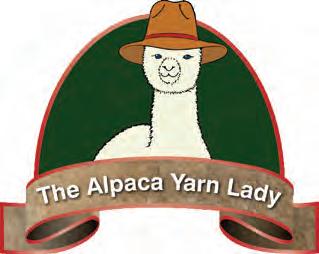
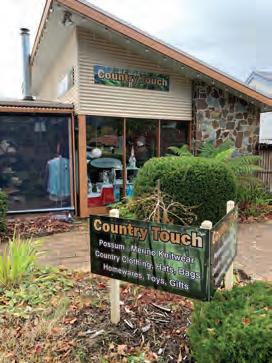








 Artist Susan McIntyre’s “happy place” is Lake Eildon. Her holiday home looks out onto the sparkling waters of Taylor Bay below.
by Carol Hopkins
Artist Susan McIntyre’s “happy place” is Lake Eildon. Her holiday home looks out onto the sparkling waters of Taylor Bay below.
by Carol Hopkins
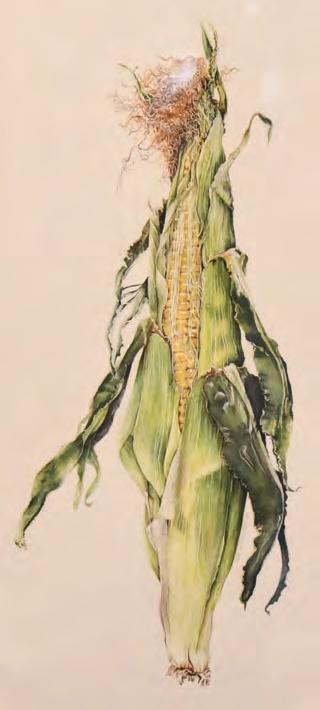
Sitting on the deck of Susan McIntyre’s holiday home, looking out onto the sparkling waters of Taylor Bay through a frame of graceful gums, it’s easy to see why this accomplished artist calls Lake Eildon her “happy place”.
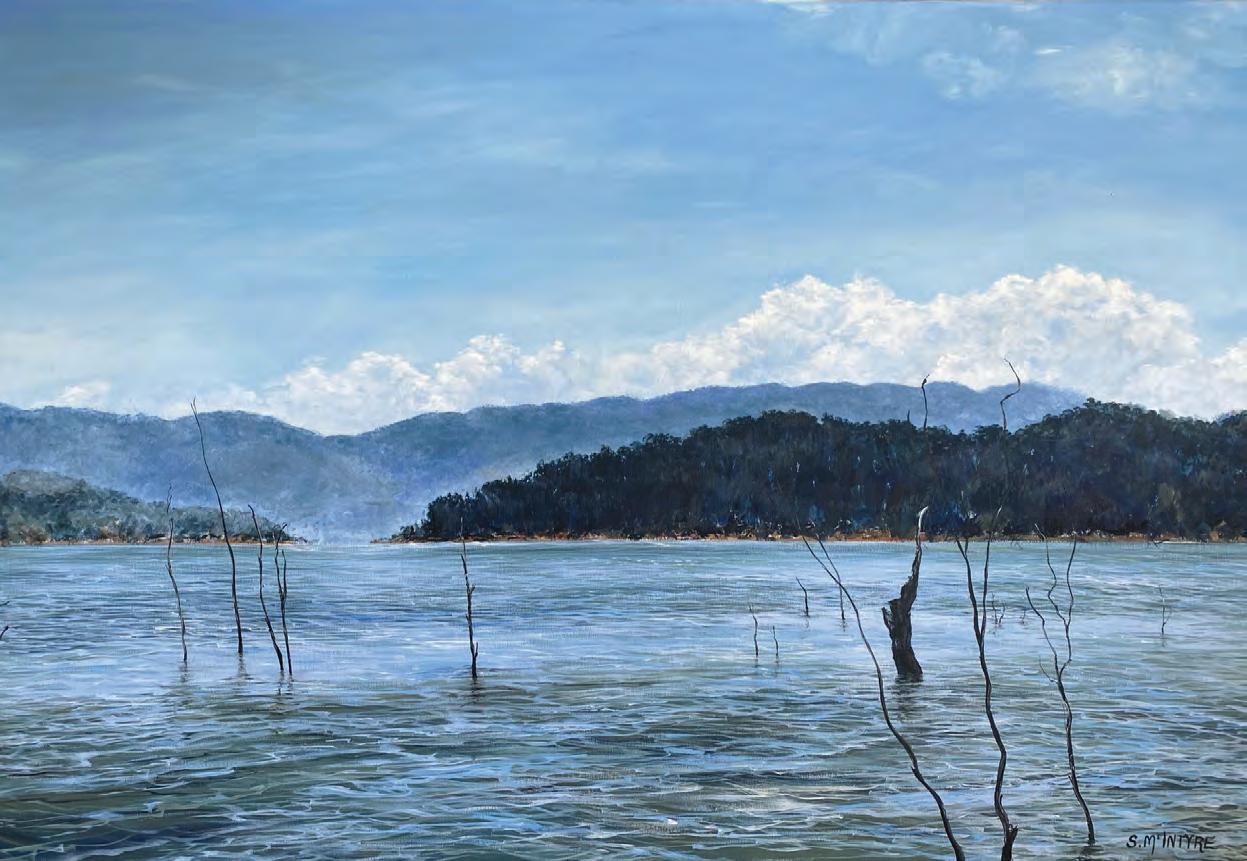
“I’ve had a connection with Eildon since I was a child and I still love it,” Susan says. “I think it’s my place of contentment, my happy place. When I’m painting in my studio here it makes me feel really good inside.”
Susan first started coming to Lake Eildon on camping trips with her family in 1958, a time when there were hardly any other people or boats around. This sowed the seeds for a life-long passion for the area.
“I’ve been coming up here all my life and I really feel it’s part of me. I think it’s a part of the world I could almost say I love the most.”
Although living in Melbourne, Susan does most of her painting at the holiday home. She says being immersed in a beautiful environment – being able to actually see and feel the natural world around her –“fires up” her creativity.
“Even looking out of my bedroom
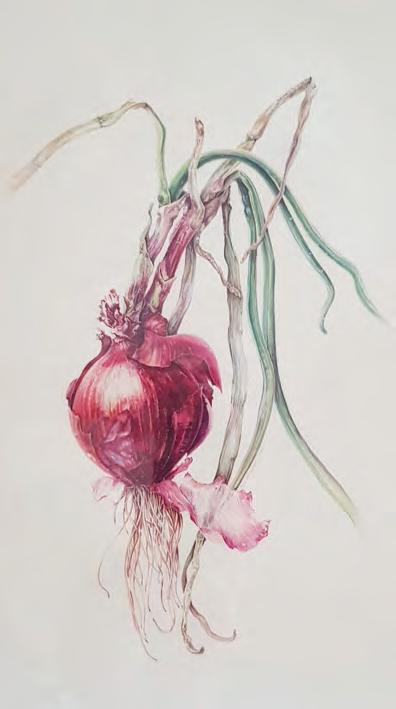
window, having cups of tea, I feel inspired.”
At the moment, Susan is focusing on painting scenes of the lake. She uses acrylic paints and particularly loves to capture the varying moods of the lake as they change with the light, the weather and the seasons.
Susan is also fascinated by the Lake Eildon skies. “I love the big skies here and the skies at night are just magical, so full of stars.”
Before turning her attention to Lake Eildon landscapes, Susan spent many years painting seascapes around Sorrento and Blairgowrie on the Mornington Peninsula. Her work was very well received with two local galleries exhibiting and selling almost all of the paintings she produced. When those galleries eventually – and sadly – closed, Susan found inspiration in the Australian outback, prompted by a trip to Maree, Oodnadatta and Coober Pedy in northern South Australia. The colours and contrasts of these stark landscapes resulted in a series of striking paintings that Susan hopes to exhibit in the future.

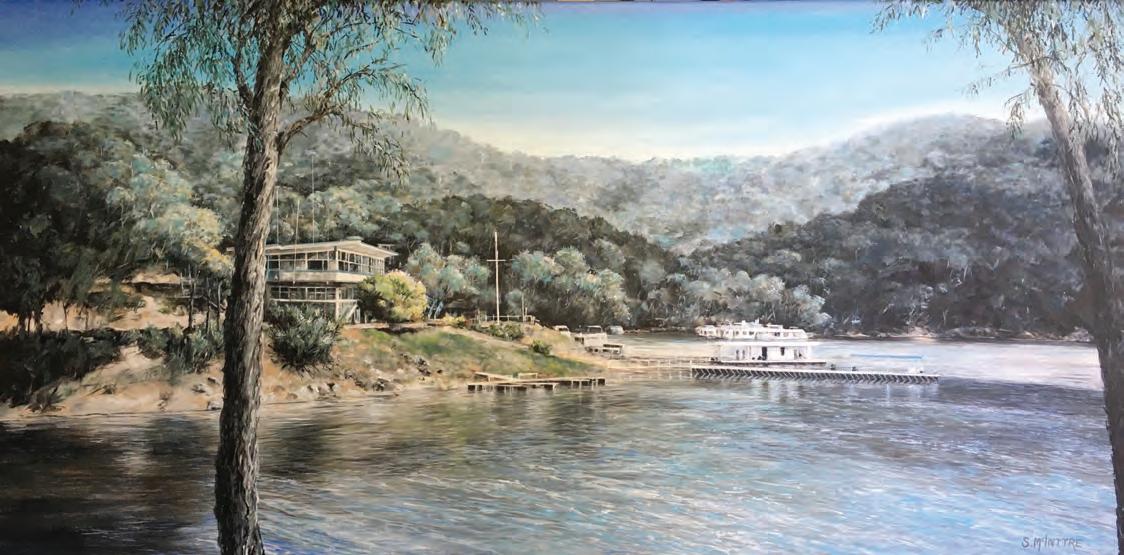
But landscape painting is not the only area of Susan’s expertise. Early in her career
as an artist, Susan focussed on botanical art, after studying with renowned artist Jenny Phillips at the Botanical Art School of Melbourne.
“I loved doing that very fine and detailed watercolour work,” Susan says.
Susan’s botanical art was so accomplished it was selected to decorate the specialty tins and bottles that Myer produced for their Christmas cakes, puddings and sauces. She also sold many of her works at exhibitions.
However, after taking a break from painting to care for her sick mother, Susan found that she had lost her creative drive.
“I was feeling empty inside and I wondered if I was ever going to get that urge back to paint again because it had just gone, and I loved it so much it just concerned me what was happening.”
That’s when Susan decided to move away from botanical art and “do something bigger” using large canvases and acrylic paints. However, Susan found that her background in botanical art still managed to creep into these paintings, particularly when she was depicting the grasses and bushes that formed the foreground to her coastal scenes.
Rather uniquely, Susan came to her career as an artist from the world of high fashion. After spending two years training as a secondary school art and craft teacher, she realised teaching wasn’t really for her and switched to fashion design. This proved to be an inspired move. On completing her Diploma in Fashion Design from RMIT she not only received an award from Norma Tullo, the celebrated Melbourne fashion designer, but was also offered a job in her fashion house. Within a year, Susan was appointed head designer and was
sent all over the world to look at clothing collections and purchase fabrics. She remained with the company for ten years.
“It was a fabulous job for me working with design, sketching, colours and fabrics,” Susan says.
Susan is currently compiling a collection of Norma Tullo clothes and accessories and hopes to mount an exhibition at some stage to celebrate the work of this outstanding fashion designer from the 1960s and 1970s.
As well as pursuing her own artistic interests, Susan has a long history of helping preschool children to express their creativity. For around thirty years she has been a co-educator at the Yarra Warra Preschool in North Warrandyte. It’s a role she has loved and, she says, some of the collaborative artworks the children have produced have been “fabulous”.
Susan’s art is an ongoing journey. “With your art you are always evolving. I am doing my Eildon paintings now, but I’ll evolve into something else. I’m trying
to loosen up a bit and I may even try something abstract.”
One thing is for sure, Susan will keep on painting, not the least because it gives her such joy and contentment. “When I’m painting, I really feel it’s ‘me’. It’s something that is so compatible with who I am.”
And what better place to feel this way than in the beautiful surroundings of Lake Eildon. If you would like to know more about Susan’s work you can visit her Instagram page @art_of_smcintyre or send an email to suemcintyre29@ gmail.com.

Alexandra: 0491 641 474
Mansfield: 0491 641 474
WE OFFER BULKBILLED EYE EXAMINATIONS

Alexandra Optical 106 Grant St Alexandra
Wednesday: 9am-5pm or by appointment
Mansfield Optical 30c High St Mansfield
Tuesday, Thursday & Friday: 9am-5pm or by appointment










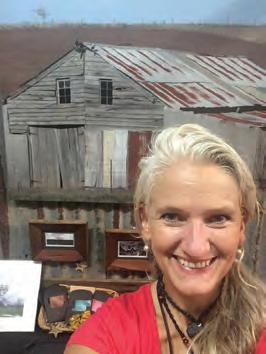


Yea Wetlands Discovery Centre
2 July to 9 July 2023
NAIDOC Week celebrations are held across Australia each July to celebrate the history, culture, and achievements of Aboriginal and Torres Strait islander peoples.
NAIDOC stands for National Aborigines and Islanders Day Observance Committee and this year’s theme is ‘For our Elders’.
At Yea, activities will commence on Sunday morning 2 July with a Smoking Ceremony and Welcome to Country in the YWDC Indigenous Garden by proud Taungurung Elder, Aunty Angela ten Burren (Franklin.)

Aunty Angela is passionate about researching her family history, Taungurung history and the history of Yea through her strong ancestral ties from her great grandfather John Franklin.
Aunty Angela is also curating a display in the Centre around the NAIDOC theme of ‘For our Elders’ in which photographs and biographies of Taungurung Elders will be displayed with feathers or flowers handpicked from Taungurung Country.
Later in the day, Uncle Ronald Briggs will address us in the Discovery Centre on the matter of the Voice to Parliament, Treaty and Truth, as set out
in the 2017 Uluru Statement from the Heart.
Uncle Ron is a Yorta Yorta elder, Senior Aboriginal Cultural Advisor and Program Facilitator at Caraniche and is also on the board of Victorian Aboriginal Health Services.

Uncle Ron will explain the origins of the Voice movement and what the Voice is expected to achieve.
Celebrated Taungurung artist and educator Cassie Leatham will hold two workshops on Wednesday 5 July using traditional weaving techniques and natural materials. Participants in the Mr Beaky Story time and Art session (Wednesday 5 July for primary aged children) will enjoy reading the Mr Beaky story with Cassie – and meet Mr Beaky himself – and creating mini clay bird sculptures.
In the afternoon weaving session participants will learn to weave string bags using traditional weaving techniques.
Places are limited for these two workshops and costs ($8 child/$15 concession and $20 adult) include all materials.
To help us plan for these events and activities please book in advance through Try Booking. Enquiries to the Yea Wetlands Discovery Centre 5797 2663.

July 14 – August 22
May 6 – May 29
“Little Battlers” an exhibition by local artist Kate Taylor including incredible fibre art, pastel, pencil and felt works.
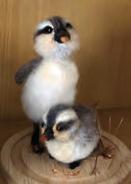
June 3 – July 5
“Wild” a mixed media exhibition celebrating the vitality of nature by local art group ‘SCONES.’ Sculpture, painting and fibre arts.
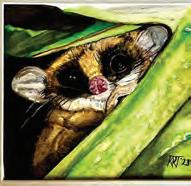
“Changed Forever, Legacies of Conflict” A Shrine of Remembrance touring exhibition https://www.shrine.org. au/changed-forever-legacies-of-conflict-exhibition (contact is Katrina 96618129)

August 27 – Victoria Concert Orchestra afternoon performance (contact MiRA for details)
October 19 and 20 – Variety Club Fundraiser Moto Run https://www.savarietymotorun.com.au/
ALEXANDRA MARKET
2nd Saturday of month 9am-1pm
Alexandra Timber Tramway, Station Street, Alexandra
Plants, herbs, local produce, unique handicrafts, bric-a-brac and collectables. Refreshments available – coffee cart, BBQ and cold drinks. Free entry. Train rides for a small donation. 0427 509 988 | market@alexandratramway.org.au | www.alexandratramway.org.au
GRANT STREET MARKET
1st Sunday of the month 9am-1pm Grant Street, Alexandra
Various stalls, music, jumping castle. Contact Andrew Embling 0418 266 038
BOLLYGUM COMMUNITY MARKET
2nd Sunday of month 9am-1pm
Bollygum Park, 40 Whittlesea-Kinglake Road, Kinglake
Kids can play in the unique adventure playground as you search for special treasures and try fantastic local produce. 0409 849 722 | bollygummarket@gmail.com
EILDON T WILIGHT MARKET
• 11 March 2023 • 8th April 2023 ~ 4pm-8pm (winter break till November)

The Eildon Pondage, Riverside Drive Eildon
Local food and beverage trucks, local producers, quality local artisans, artists and creators. Live music showcasing local youth and artists. Family activities, pet friendly (dogs must be on a lead). Gold coin entry. Karine 0400 715 319 | karine.haslam@gmail.com
FLOWERDALE COMMUNITY MARKET
3rd Sunday of month 9am-1pm
Flowerdale Community Hall, Yea Whittlesea Road, Flowerdale Country market stalls with arts, crafts, veggies, plants, bric-a-brac. Hot food, Devonshire teas, cold drinks available. New stall holders welcome, $10 a stall. Alison 03 5780 1223 | Alron27@bigpond.com
KINGLAKE PRODUCE & ARTISAN MARKET
4th Sunday of month 10am-3pm (held on the 3rd Sunday in December)

19 Whittlesea-Kinglake Road, Kinglake
Fresh from us to you. High quality items, grown or made by our stall holders. Proving quality products and food every month, all year round. 0419 339 320 | kinglakemarket@gmail.com | www.kinglakemarket.com
MARYSVILLE MARKET
2nd & 4th Sunday of month – Murchison Street, Marysville
Crafts, gifts, clothing, plants, locally produced preserves, jams, chutneys, lavender products, shortbread biscuits, honey, fresh fruit and vegetables and wine. Additional stallholders invited.
TAGGERTY 4 SEASONS MARKET
Saturday of Australia Day, Easter, Queen’s Birthday and Melbourne Cup Weekends 9am-1pm – 3 Taggerty-Thornton Road, Taggerty
Local produce including olive oil, wine, honey, fudge, baked goods, preserves, soaps, crafts, bric-a-brac, fruit, vegetables, plants, free range eggs, BBQ sausages and espresso coffee. taggertycommunityprogress@gmail.com
TALL AROOK FARMERS MARKET
1st Sunday of month (except January) 8.30am-12pm (second market in December on 3rd Sunday)– 44 Main Road, Talarook
Fresh local produce. Relax in the market cafe while listening to local musicians. Free kids activities.
0403 831 520 | Facebook Tallarook Farmers Market
YARCK COUNTRY MARKET
3rd Saturday of month 9am-1.30pm – Yarck Hall, Maroondah Hwy, Yarck
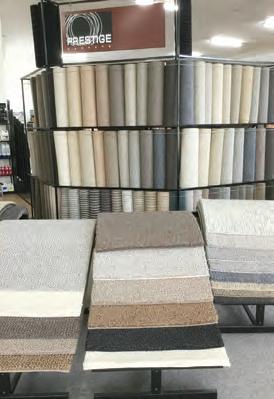

The market helps to fund the hall maintenance and provides an outlet for local produce, jams, craft, plants and wines.
0407 879 612 | yarckhall@hotmail.com | www.visityarck.com.au
YEA RAILWAY MARKET
1st Saturday of month – Yea Railway Reserve, Station St Yea Fresh local produce, arts and crafts, children’s activities, playground and skate park. The market showcases local producers, growers and makers and is a community event with a gold coin donation entry - funds from entry are donated to local charities each month.
0427 722 624 | globalgemsandfinejewellery@gmail.com
SATURDAY 3 & SUNDAY 4 ~ DARREN GILBERT OPEN STUDIOS
Yea Butter Factory, 13 Rattray Street, Yea
Art and sculpture in a beautiful historic building in Yea. 10am-4pm W: www.monkeytaildesign.com F:www.facebook.com/darren. gilbert.503
P: 0421 378 451 E: gmgilbert@skymesh.com.au (see ad page 38)
SATURDAY 3 – WEDNESDAY 5 JULY ~ WILD EXHIBITION
MiRa, 11 Murchison Street, Marysville
A mixed media exhibition celebrating the vitality of nature by local art group ‘SCONES.’ Sculpture, painting and fibre arts. (see ad page 62)
P: 5963 4567 W: miramarysville.com.au
SATURDAY 10 ~ THE VICTORIAN TRUCK DRIVERS MEMORIAL SERVICE
Rotary Park, Alexandra
2pm. A memorial service held to unveil names of lost truck drivers each year. W: www.vtdm.asn.au
SUNDAY 11 ~ ALEXANDRA TRUCK UTE AND ROD SHOW
Grant Street, Alexandra
Rigs, rods and utes on show, live music, specialist vehicles, markets, championship woodchop titles. Entry is free. 10am-4pm. (see ad back cover)
W: www.alexandratruckshow.com.au
E: info@alexandratruckshow.com.au P: 0418 266 038
SUNDAY 11 ~ MUDBASH OPEN DAY
Mafeking Rover Park, Caveat
An annual motorsport event run by the Rover Scout section of Scouts Australia. Gold coin donation entry. Scouts in uniform free. 10am-5pm. Ben Courtney E: chair@mudbash.com (see article page 52)
Sienna Brown E: media.communications@mudbash.com
SATURDAY 16 ~ MUSIC BY ROBBIE
Goulburn River Inn, 4364 Goulburn Valley Hwy, Molesworth
The Australian Robbie Williams Show including dancers. P: 5797 6266 W: goulburnriverinn.com.au (see ad page 5)
SUNDAY 25 ~ SNOBS CREEK HATCHERY OPEN DAY
455 Goulburn Valley Hwy, Eildon
Exclusive opportunity to tour the hatchery, free, 10am-4pm W: www.vfa.gov.au/snobsopenday (see ad page 49)
SATURDAY 1 & SUNDAY 2 ~ DARREN GILBERT OPEN STUDIOS
Yea Butter Factory, 13 Rattray Street, Yea
Art and sculpture are in a beautiful historic building in Yea. 10am-4pm. W: www.monkeytaildesign.com
F:www.facebook.com/darren. gilbert.503 P: 0421 378 451 E: gmgilbert@skymesh.com.au (see ad page 38)
FRIDAY 14 – TUESDAY 22 AUGUST ~ SHRINE OF REMEMBRANCE
TOURING EXHIBITION
MiRa, 11 Murchison Street, Marysville
“Changed Forever, Legacies of Conflict” A Shrine of Remembrance touring exhibition https://www.shrine.org.au/changed-forever-legacies-of-conflictexhibition (contact is Katrina 96618129) (see ad page 62)
P: 5963 4567 W: miramarysville.com.au
SATURDAY 5 & SUNDAY 6 ~ DARREN GILBERT OPEN STUDIOS
Yea Butter Factory, 13 Rattray Street, Yea
Art and sculpture in a beautiful historic building in Yea. 10am-4pm W: www.monkeytaildesign.com F:www.facebook.com/darren. gilbert.503
P: 0421 378 451 E: gmgilbert@skymesh.com.au (see ad page 38)
SATURDAY 19 ~ MUSIC BY KISS THIS Goulburn River Inn, 4364 Goulburn Valley Hwy, Molesworth
The ultimate Kiss tribute show.
P: 5797 6266 W: goulburnriverinn.com.au (see ad page 5)
Officially unveiled on 7 June 2014, the Victorian Truck Drivers Memorial wall, located at Rotary Park, Alexandra, is a permanent place of memory and reflection for those who lost their lives in transport related accidents or individuals who have made a significant contribution to the transport industry of Victoria. The wall was constructed by local volunteers in collaboration with the Victorian Truck Drivers Memorial Committee, Alexandra Events, GriefWork-Uniting and Murrindindi Shire Council.
The Victorian Truck Drivers’ Memorial provides a solemn place of reflection for those touched by the loss of a person commemorated with a plaque on the wall. The Memorial is an inherently apolitical, secular, not-for-profit institution serving all who come to remember; an everlasting tribute to the truck drivers after which it’s named.

The wall can be visited year-round, with BBQ facilities, restrooms and a Visitors Centre within Rotary Park, making it a lovely spot to stop and pay tribute to the men and women of the transport industry who have passed. Further information of the history of the wall and significance of the annual service is on display in the rotunda adjacent to the wall.
The 2023 Victorian Truck Drivers Memorial service will be held on Saturday 10 June, at Rotary Park in Alexandra at 2pm. Each year, during the service, new plaques are added to the wall reflecting the names of individuals who have passed. It is an opportunity for families and loved ones to pay their respects to those who have previously been added to the wall and new additions.
For additional information on the Victorian Truck Drivers Memorial wall and the annual service, please visit www.vtdm. asn.au or the Victorian Truck Divers Memorial Facebook page. Nominations for individuals to be recognised on the memorial wall close on 30th March each year. For more information on the application process, please visit www.vtdm.asn.au/ nominations
SUNDAY 27 – VICTORIA CONCERT ORCHESTRA PERFORMANCE
MiRa, 11 Murchison Street, Marysville (contact MiRA for details) (see ad page 62)
P: 5963 4567 W: miramarysville.com.au
SATURDAY 2 ~ 2023 GOULBURN FISHING FESTIVAL
Lions Park, Riverside Drive, Eildon
Fishing fun for all the family. Free event. 10am-4pm (see ad page 49) W: www.vfa.gov.au/goulburnfishfest






























• Sales of New Mercury/ Mercruiser Engines



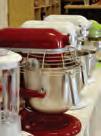
• Sales of Second Hand Engines and Boats
20 Sugarloaf Road Eildon VIC 3713 Ph 5774 2132 eildonoutboard@virtual.net.au


• Showroom full of everything your boat needs for your day on the water. Spare Parts, Electrical Accessories, Mooring Ropes, Cleaning Products and much more



• Watersports accessories & PFD’s WINTER OPENING HOURS MON-FRI: 8am-4.15pm
SATURDAY: 9am-1pm SUNDAY: Closed PUBLIC HOLIDAYS: 9am-1pm






BUILDERS
Secret Thai, Alexandra 0478 113 945
Snobs Creek Bar & Grill 5774 2903
Tallarook General Store & Cafe
Tallarook 5792 1687
The Provender Country Bakehouse Yea 5797 3155
Yea Chinese Restaurant 5797 2865
Yea Take Away, Yea 5797 2664
ELEC TRICIANS
Tallarook General Store & Cafe
Tallarook 5792 1687
GIFT SHOP / CLOTHING / ANTIQUES
Goody’s Discounts, Alexandra 0438 702 982
Flori e Casa, Yea 0412 322 419
Lit & Beyond, Marysville 0422 239 754
Nanny Jan’s Little Emporium
Eildon Shopping Centre
HOUSEBOAT SALES
Houseboat Sales Lake Eildon 0499 990 024
LANDSC APING
Itec Earthworks 0421 921
CARAVAN
Blackwood Electrics, Taggerty 0418 997 780 / 0434 100 518
E-Tec Electrical Contractor Alexandra 0418 543 310
Grimshaw Electrics Thornton 0429 808 596
J Williams Electrical Alexandra 0439 842 030
EQUIPMENT HIRE
Rural Equipment Hire, Alexandra 0429 394 166
FARM CONTRACTING
ES Hadfield Contracting 0429 931 127
FARM EQUIPMENT
Elders, Yea 5797 4100
Embling Rural, Alexandra 5772 3110
Nutrien Ag Alexandra 5772 2444
Yea 5797 2799
Yea Machinery 9730 1988
FENCING
On Track Fencing & Earthworks 0400 495 131
FISHING SUPPLIES
Eildon Bait & Tackle 5774 2712
Jerusalem Creek Bait & Tackle
Eildon 5774 2585
Maroondah Outdoor Equipment
Buxton 5774 7292
Snobs Creek Bar & Grill 5774 2903
Totally Trout, Alexandra 5772 2662
FISHING TOURS
Eildon Pondage Guiding Services 0428 105 025 / 0439 344 788
Nor thern Waters Boat Hire 5774 2585
FLOOR COVERINGS
Chookies Furniture Warehouse Alexandra 5772 2152
Slocum Floorcoverings 9439 6066
Nice, Yea 0413 489 196
Redgate Bazaar, Alexandra 0407 683 712
Rustic Simplicity, Alexandra 0419 517 045
The Alpaca Yarn Lady, Alexandra 0427 879 998
GLASS PRODUC TS
Alexandra Windscreens & Glass
Alexandra 0427 577 839
Ridgeline Glass & Glazing
Healesville 5962 2888
GRAPHIC DESIGN
Ann Friedel Publishing 0418 556 107
HARDWARE / TIMBER STORES
Yenckens Alexandra 5772 2188
Mansfield 5775 2511
Yea 5797 2290
Jerusalem Creek Marina & Hoilday Park
Eildon 5774 2585
HEALTH / BEAUTY / WELLBEING
Alexandra Physiotherapy
Alexandra 5772 2649
Jessica’s Sheer Beauty
Alexandra 5772 3322
Moksha Massage
Alexandra 0409 814 344
ND Podiar ty, Alexandra 0439 205 999
Terr y White Chemmart, Eildon 5774 2626
HEATING
Bowd Heating, Alexandra 5772 1045
Euro Fireplaces eurofireplaces.com.au
HOSPITALITY SUPPLIES
Mansfield Hospitality Supplies5779 1660
HOTELS / MOTELS / RESORTS
Alexandra Hotel 5772 1014
Alexandra Motor Inn 5772 2077
In The Pink, Taggerty 5774 7242
EATERIES / BAKERIES / RESTAURANTS
501 Cafe Bar & Grill Jerusalem Creek 5774
Dindi Naturals Cafe, Yarck 5773 4349
Eildon Bakery & Cafe, Eildon 5774 2362
Elevation 423, Marysville 0455 046 623
El Largo, Eildon 0472 593 367
Flowerdale Estate
Strath Creek 5784 9280
Kazza’s Diner, Alexandra 5772 2322
Keppel Cafe, Marysville 5797 2513
Killingwor th Hill Cafe & Whisky Bar
Yea 0455 266 888
Marysville Gourmet Pies 0492 879 503
On Point Brewery
Alexandra 0413 562 693
Ros Ritchie Wines
Mansfield 0444 588 276
Saladin Lodge, Narbethong 0429 699 969
FLORISTS / FLOWERS Full Bloom Alexandra 0430 580 264 Flori e Casa, Yea 0412 322 419
Goulburn Valley Nursery 0417 907 278
FUNERAL SERVICES
McCormack Funerals 1800 080 909
FURNITURE STORES
Chookies Furniture Warehouse
Alexandra 5772 2152
GALLERIES
Darren Gilbert Open Studio Highlands www.monkeytaildesign.com
Kinglake Creative facebook
Marian Rennie Gallery, Acheron 0412 109 129
MIRA Mar ysville 5963 4567
Rustic Simplicity Alexandra 0419 517 045
Studio 2427, Buxton 0417 323 868
GENERAL STORES/ GROCERIES
Jerusalem Creek Marina & Holiday Park
Lake Eildon 5774 2585
Snobs Creek Holiday Park 5774 2903
Black Spur Inn, Narbethong 5963 7121
Bonfire Station Farmstay 0423 457 072
Bux ton Hotel, Buxton 5774 7381
Eildon Lake Motel, Eildon 5774 2800
Flowerdale Estate
Strath Creek 5784 9280
Flowerdale Hotel 5780 1230
Goulburn River Inn
Molesworth 5797 6266
Holmesglen at Eildon
Eildon 5774 2631
Jerusalem Creek Marina & Holiday Park
Lake Eildon 5774 2585
Royal Mail Hotel, Yea 5797 2515
Rubicon Hotel Motel
Thornton 5773 2251
Snobs Creek Holiday Park 5774 2903
Taylor Bay Country Club
Taylor Bay 0497 889 353
Yarck Hotel 5773 4226
Yea Motel, Yea 5797 2660
Yea Peppercorn Hotel, Yea 5797 2000









